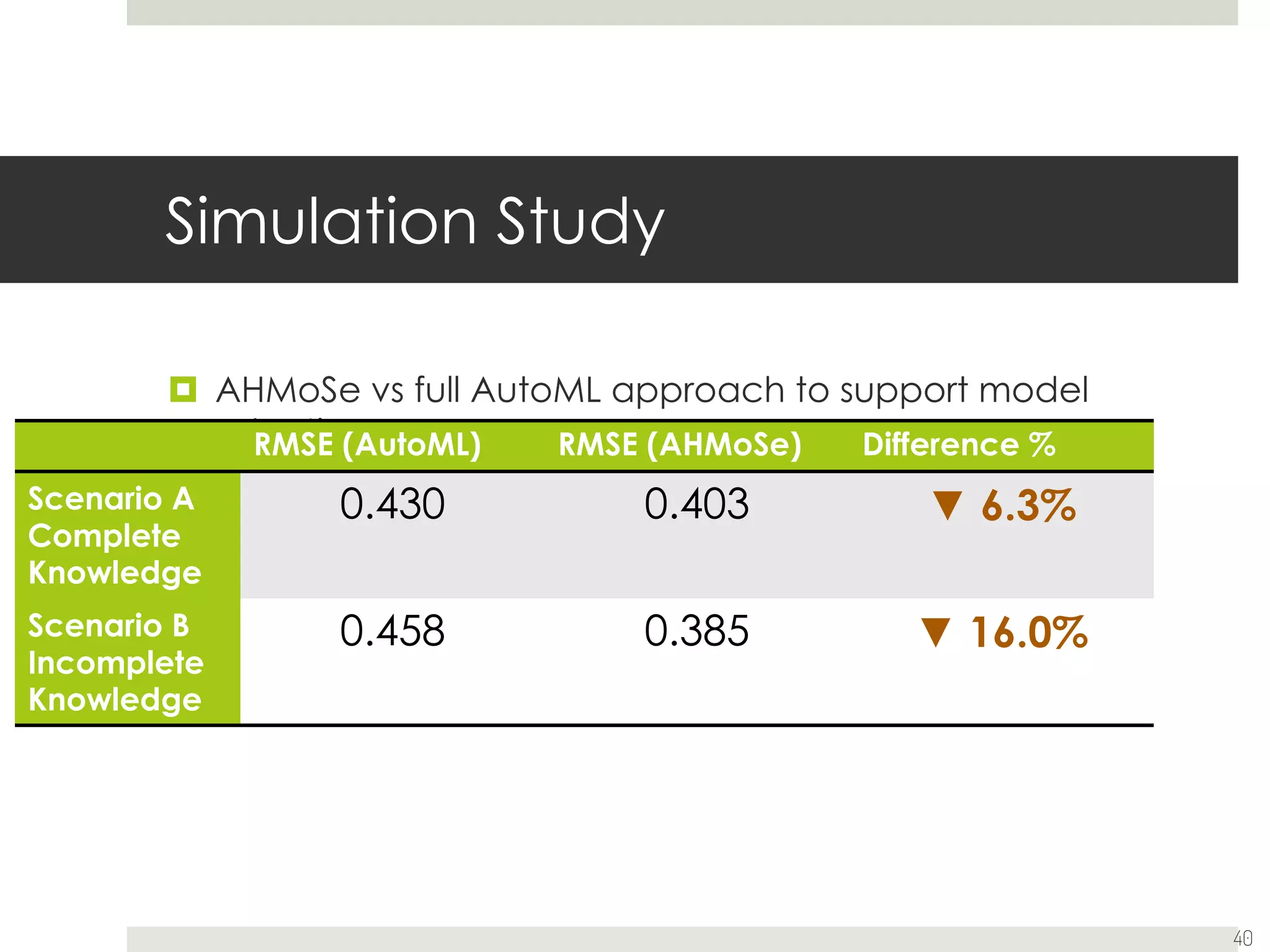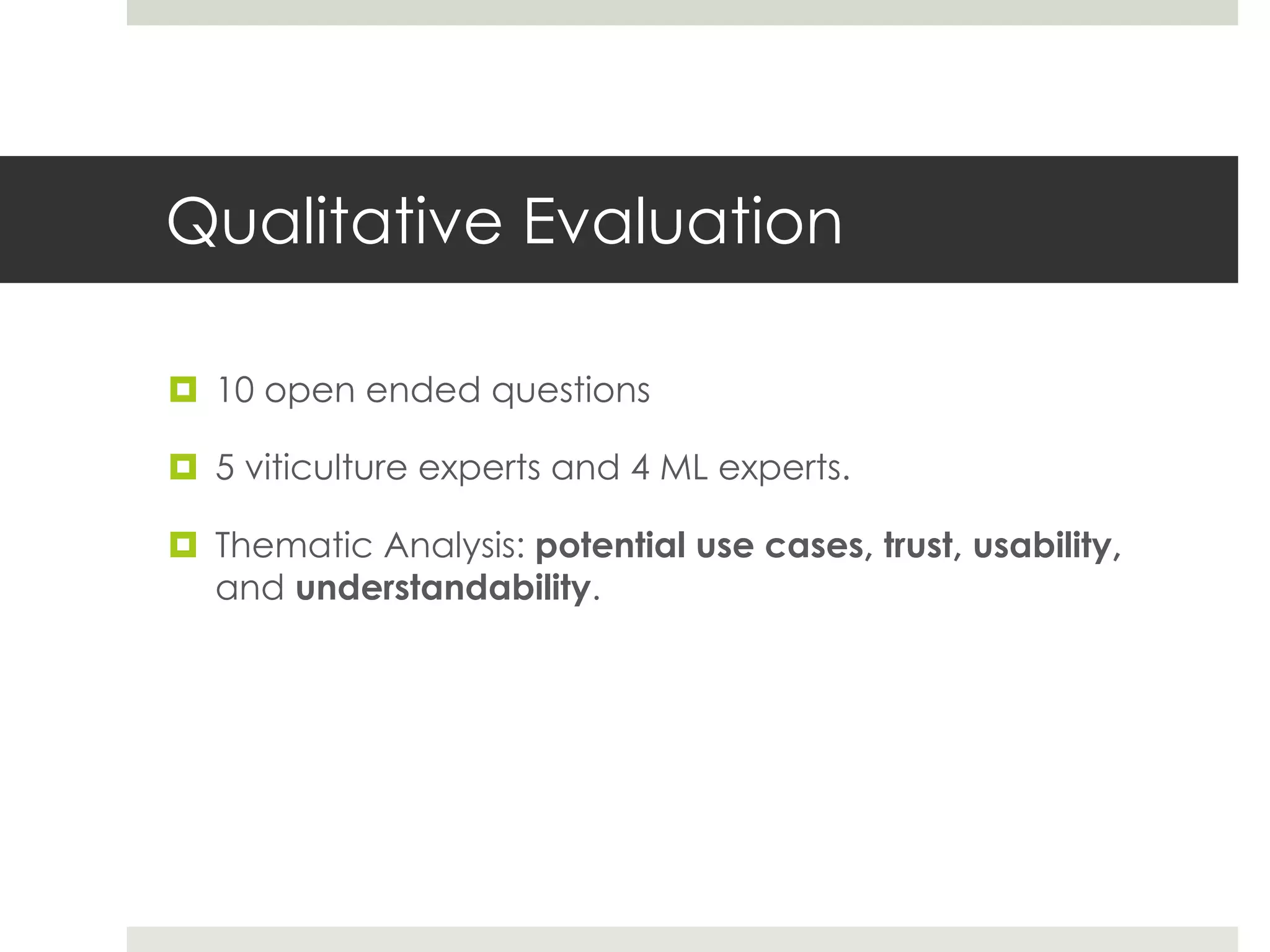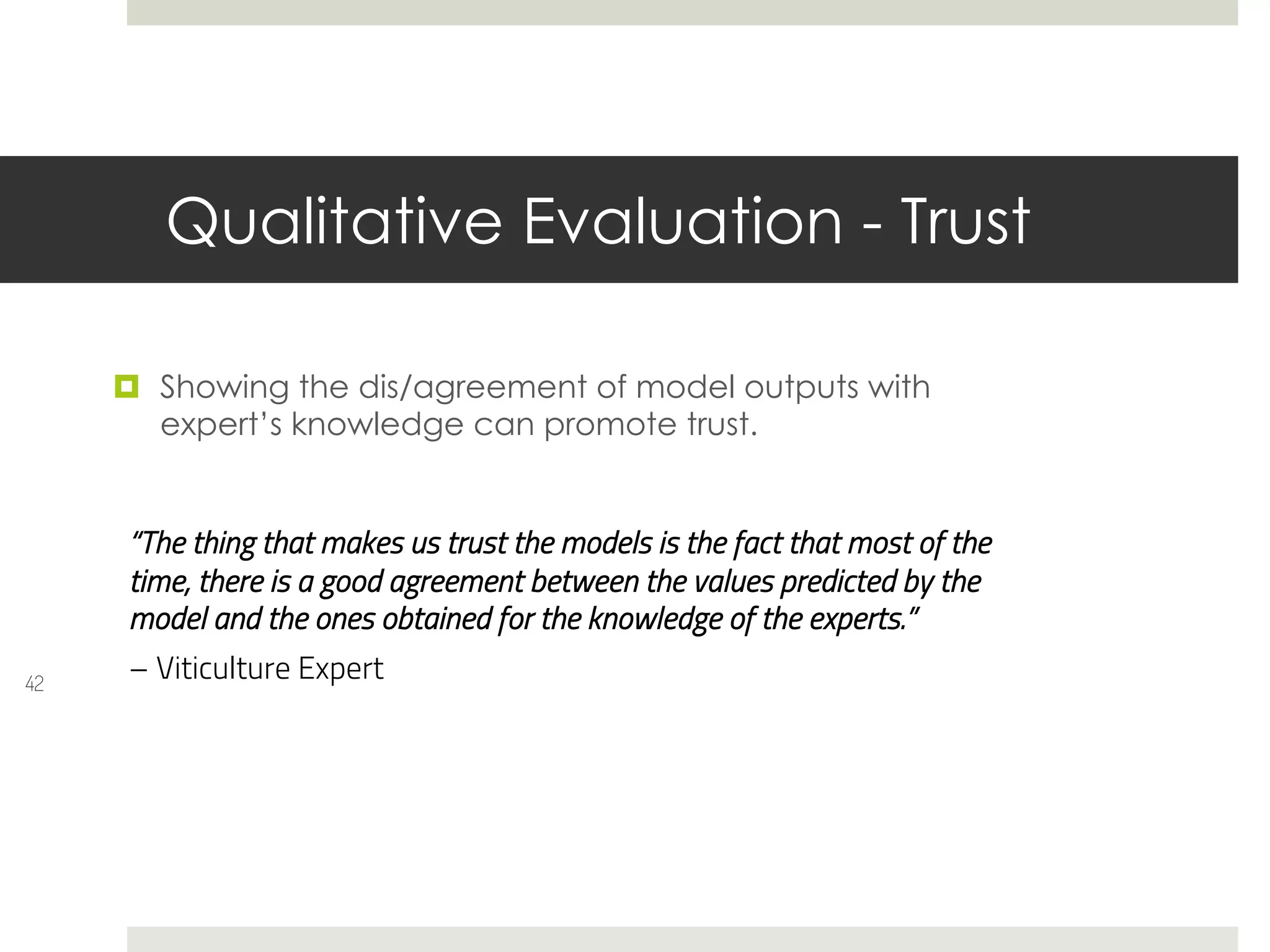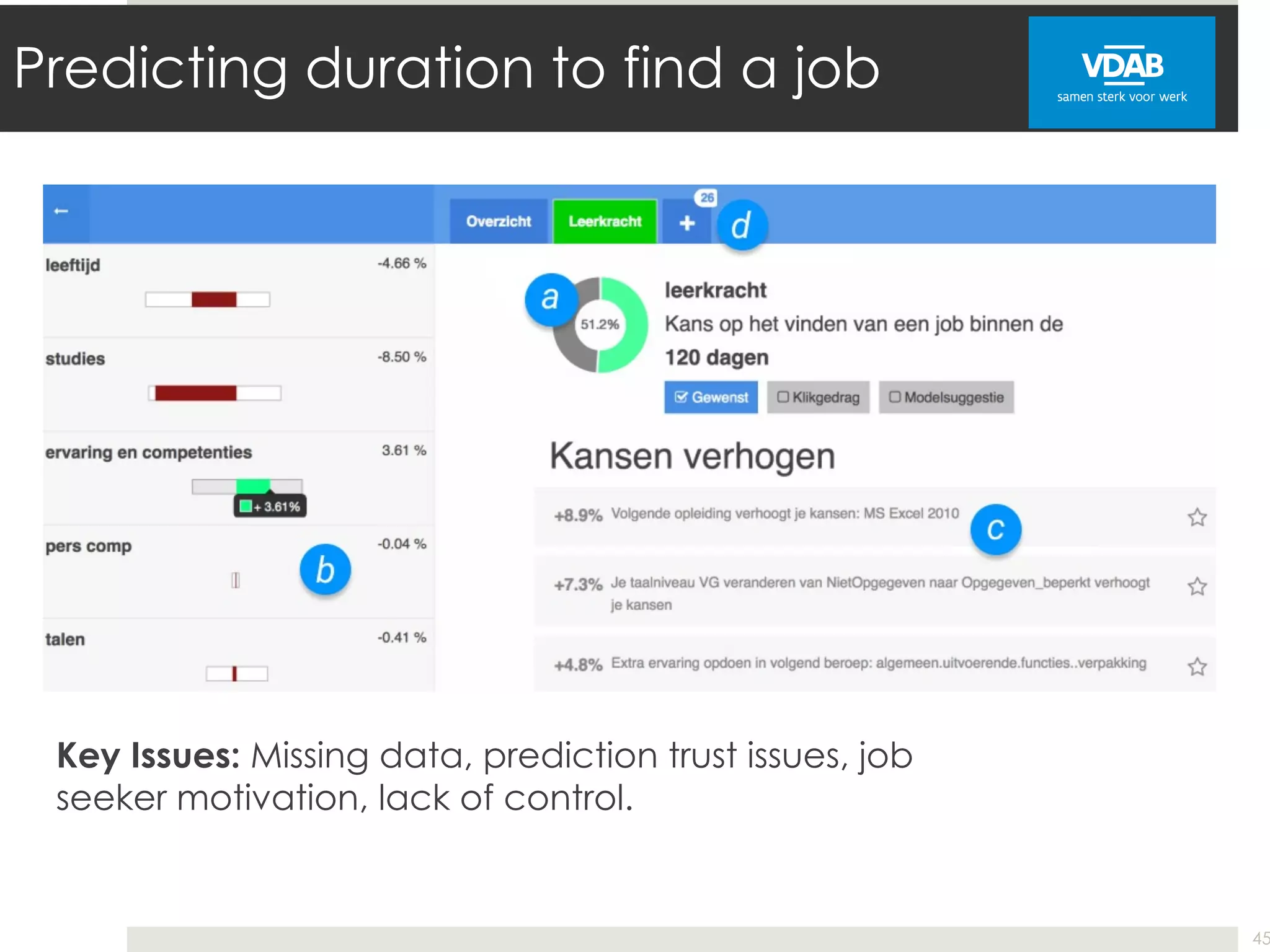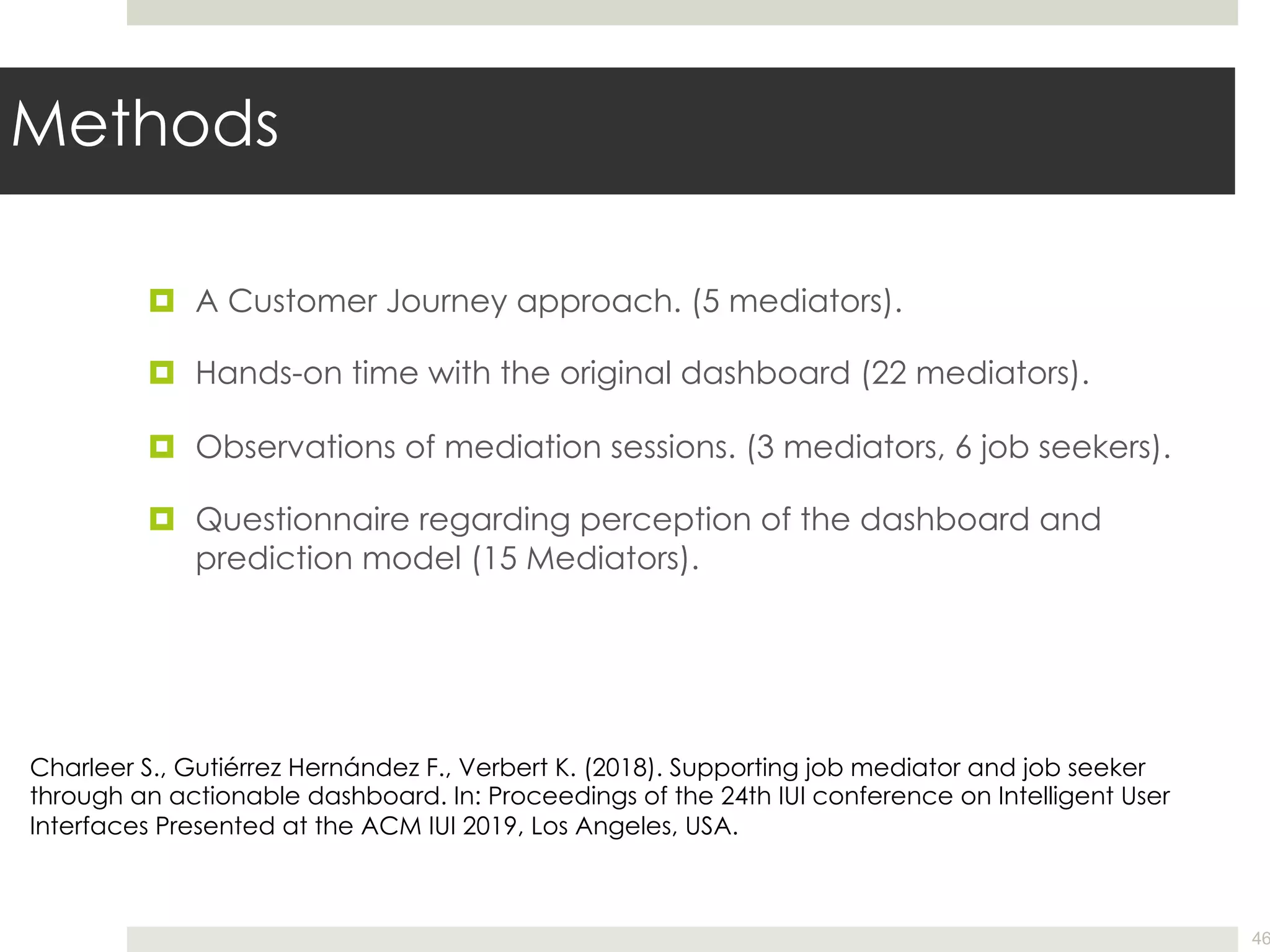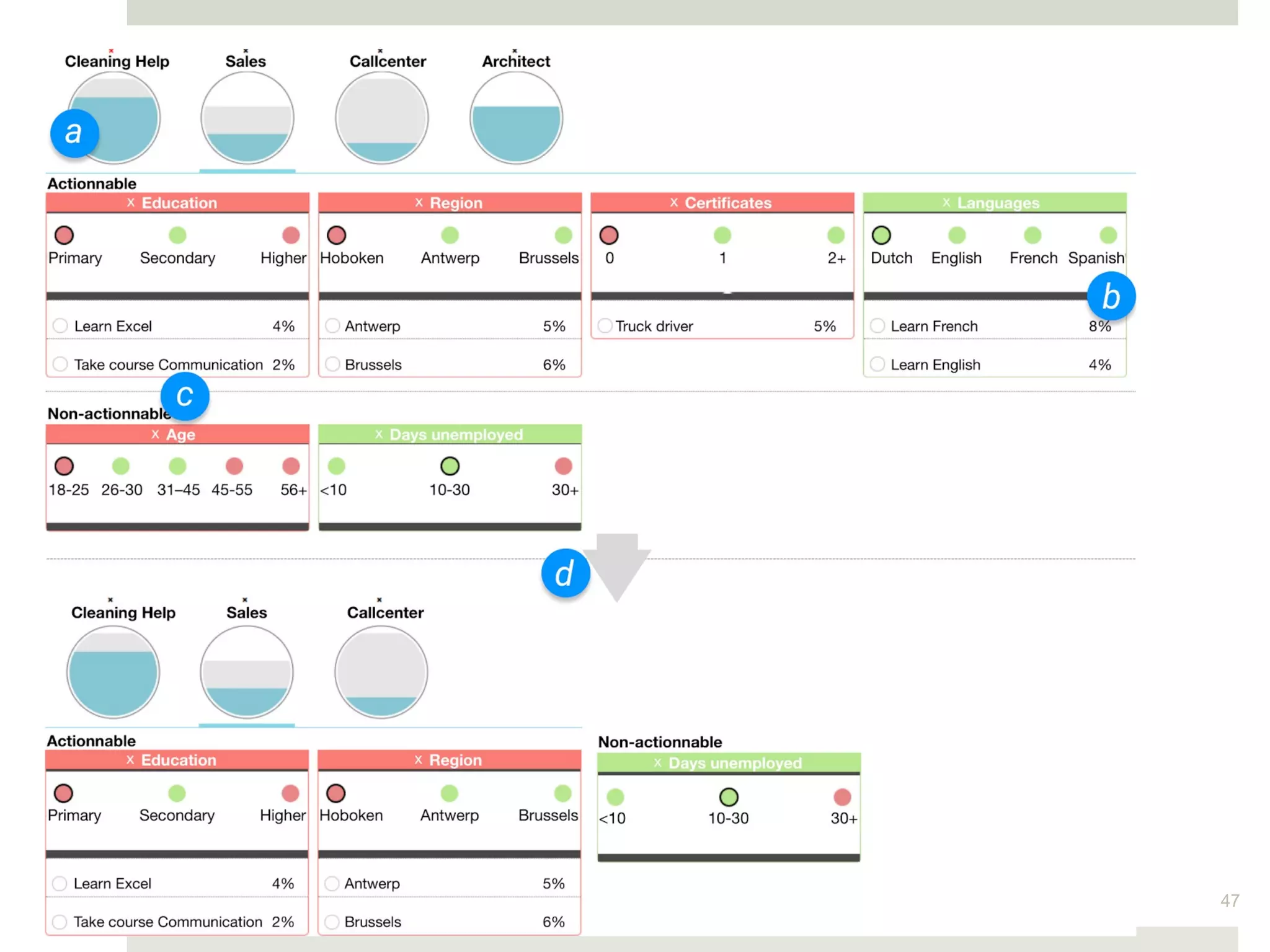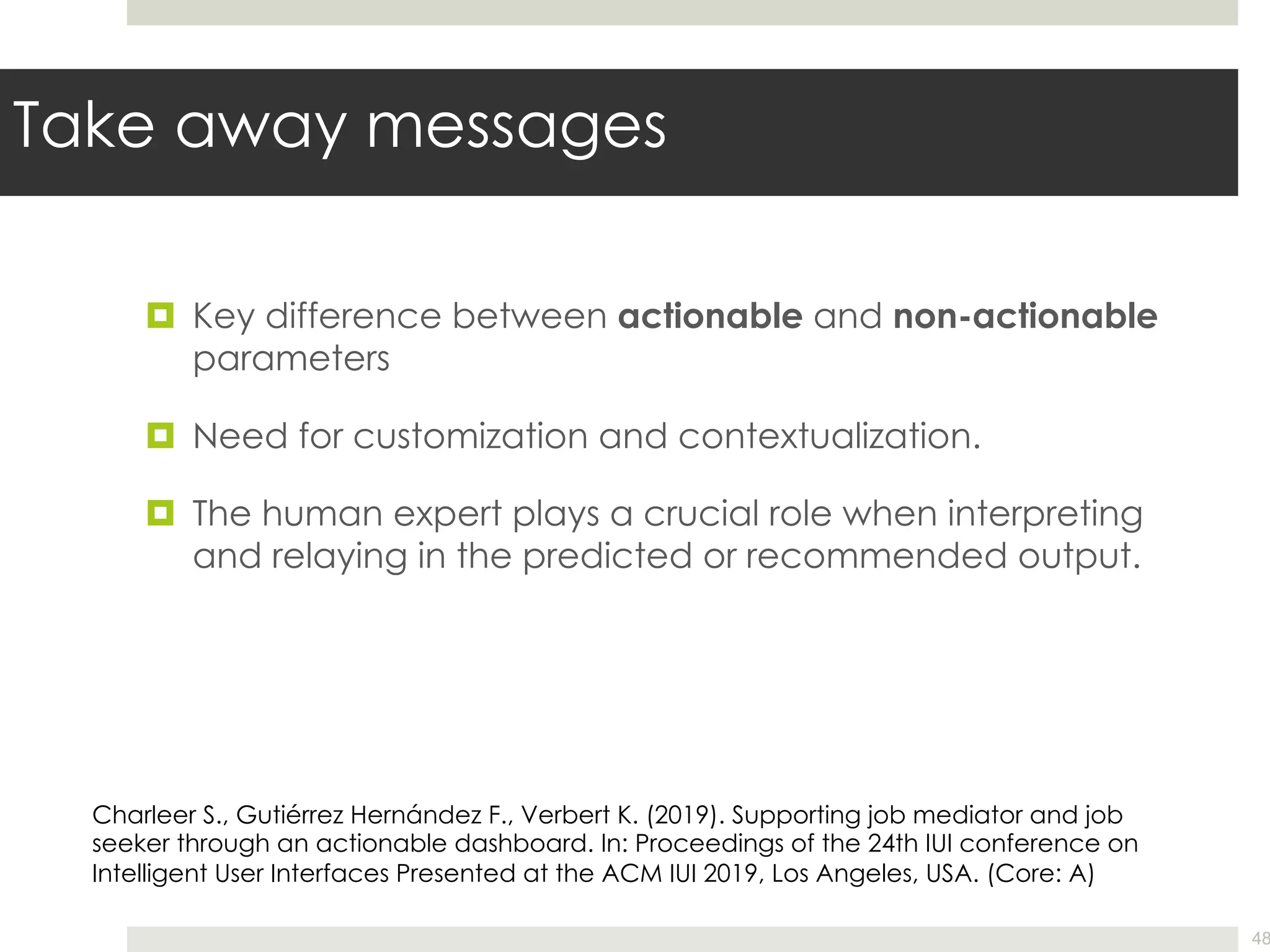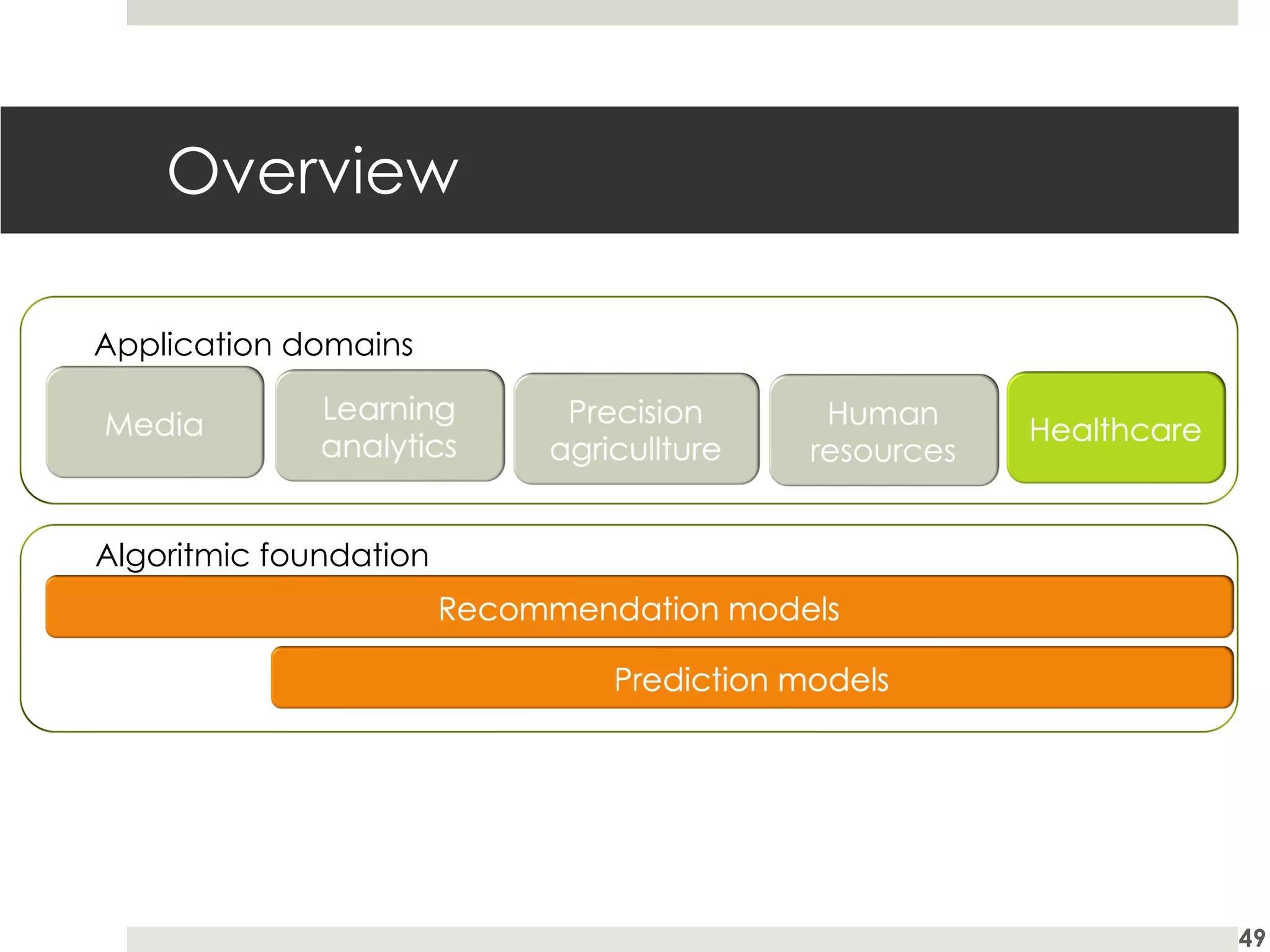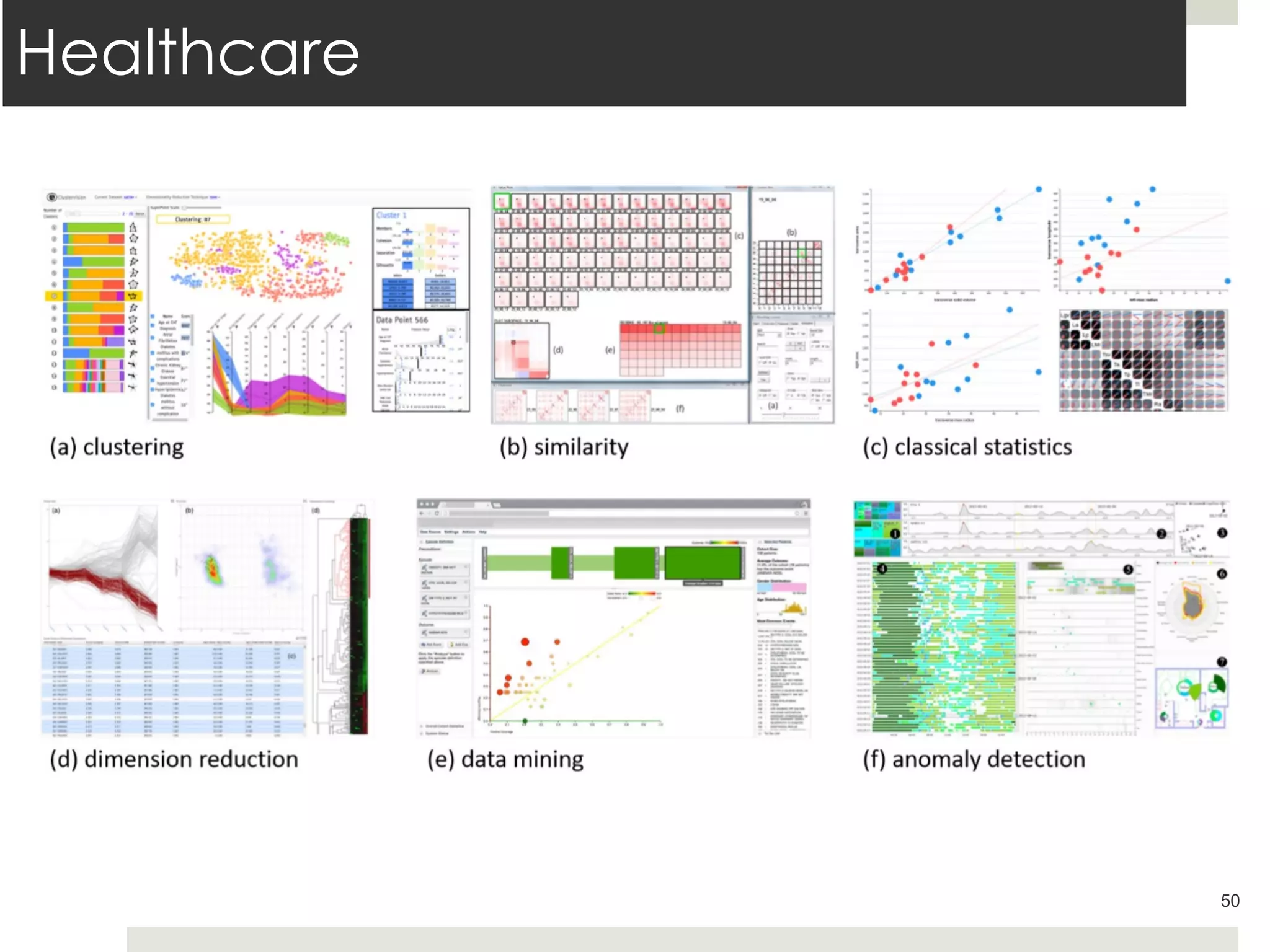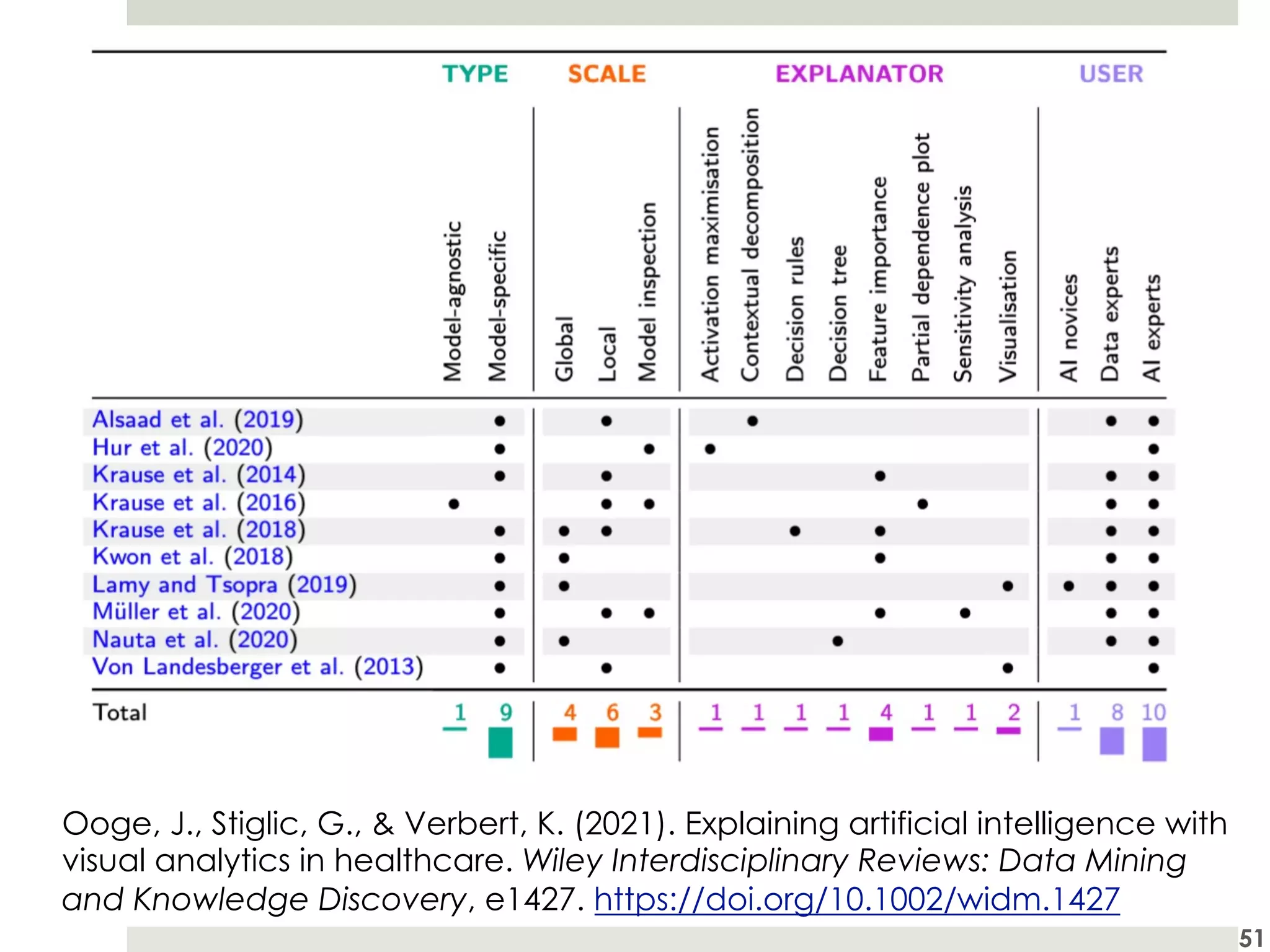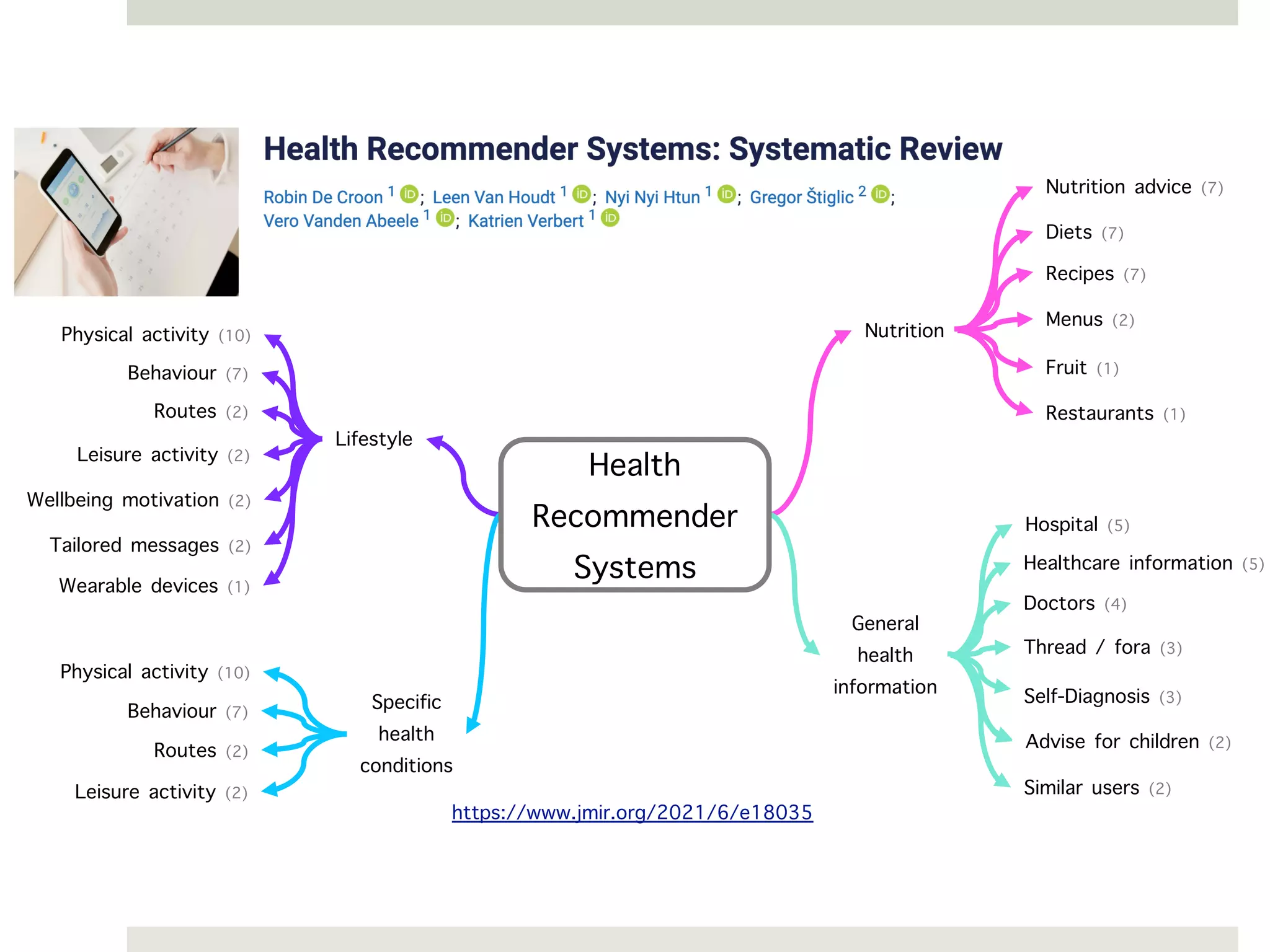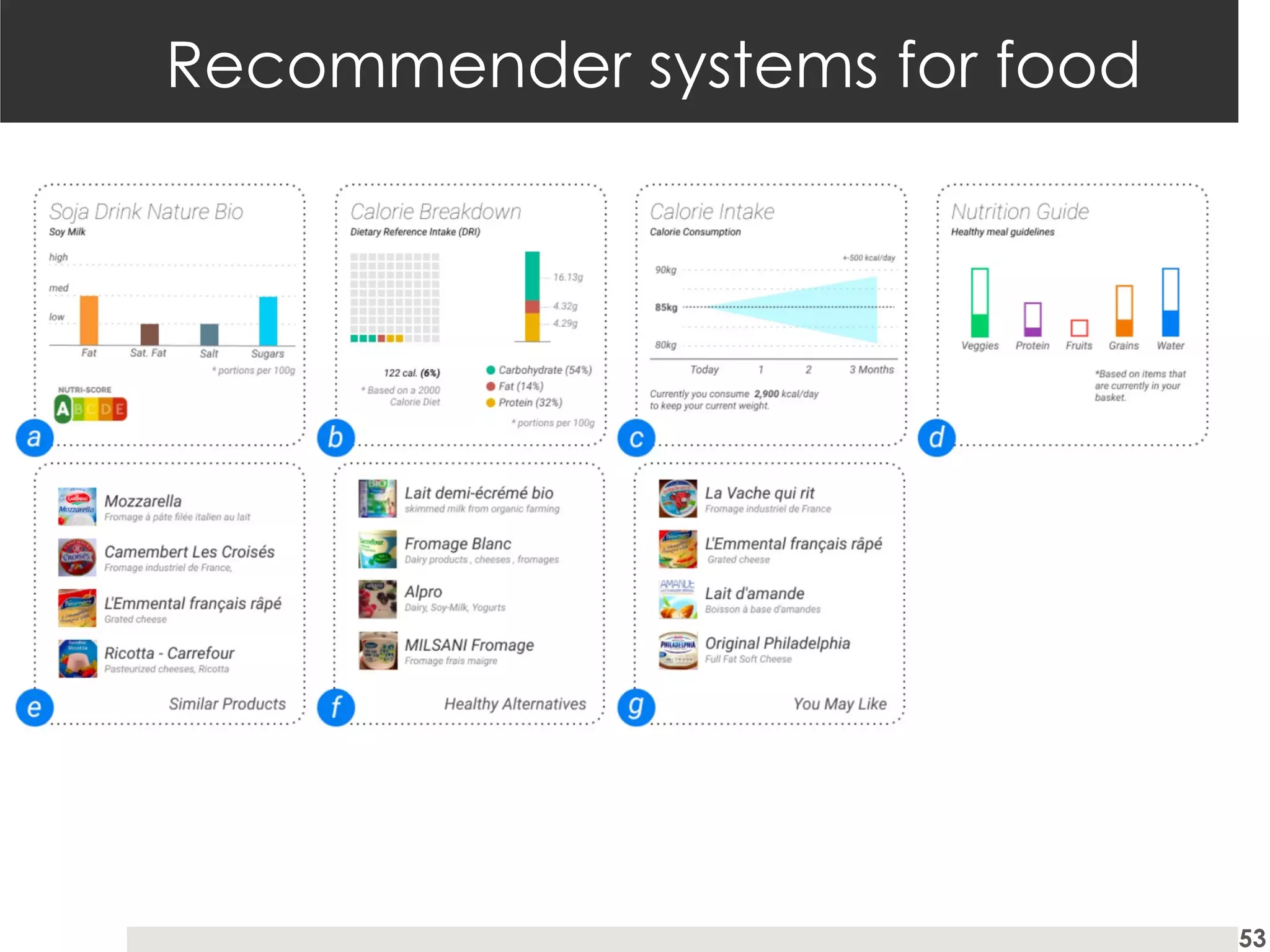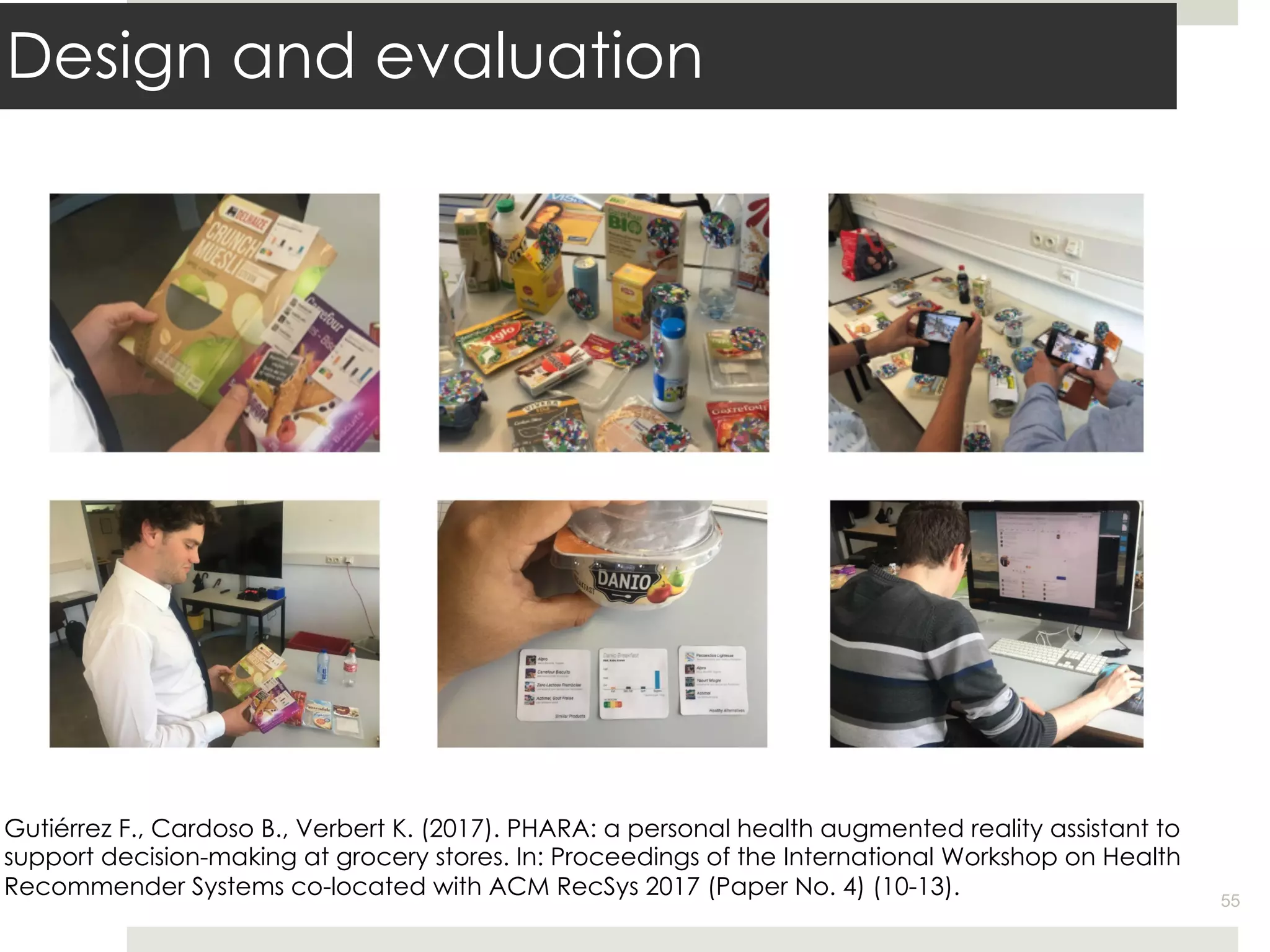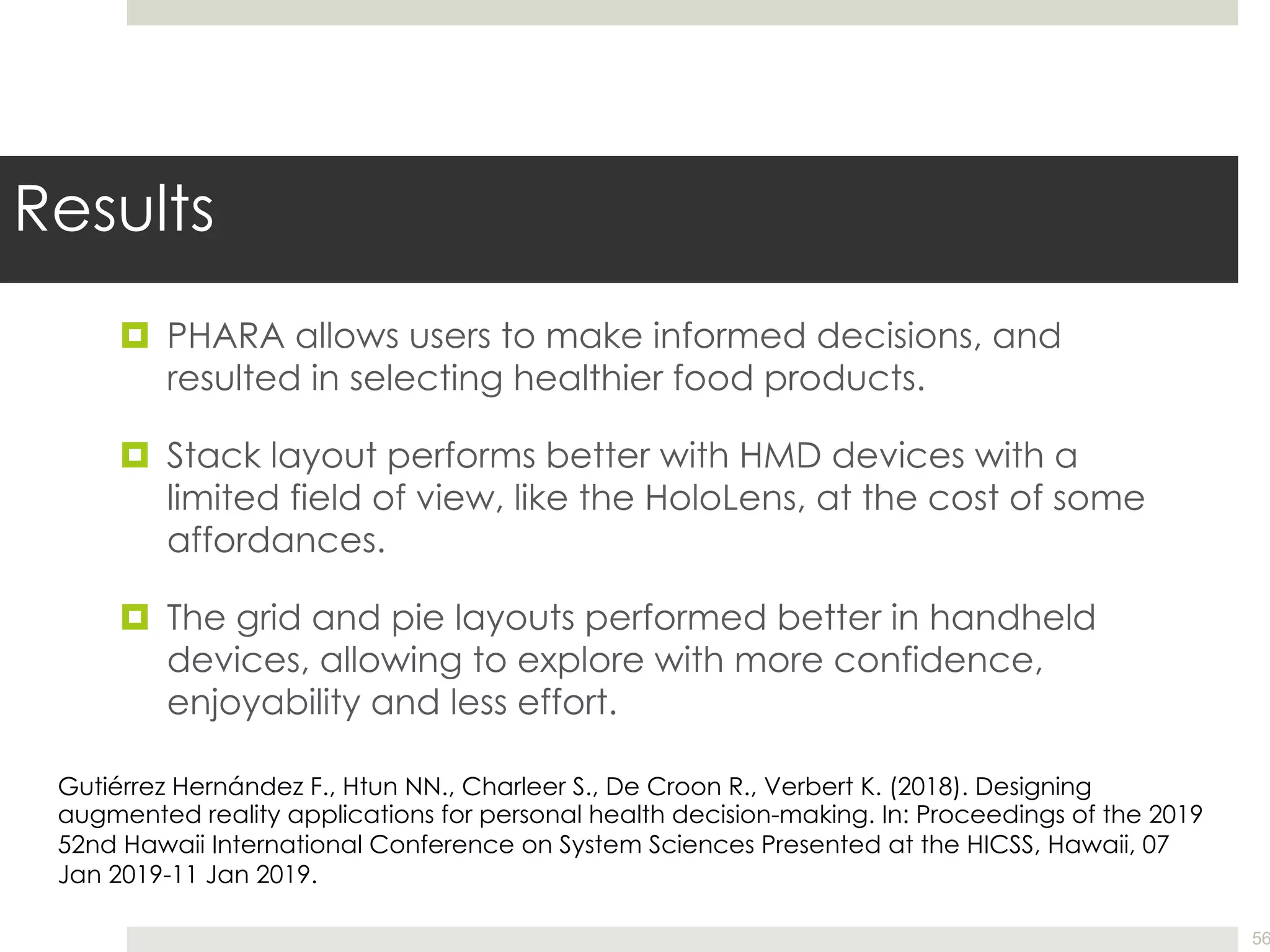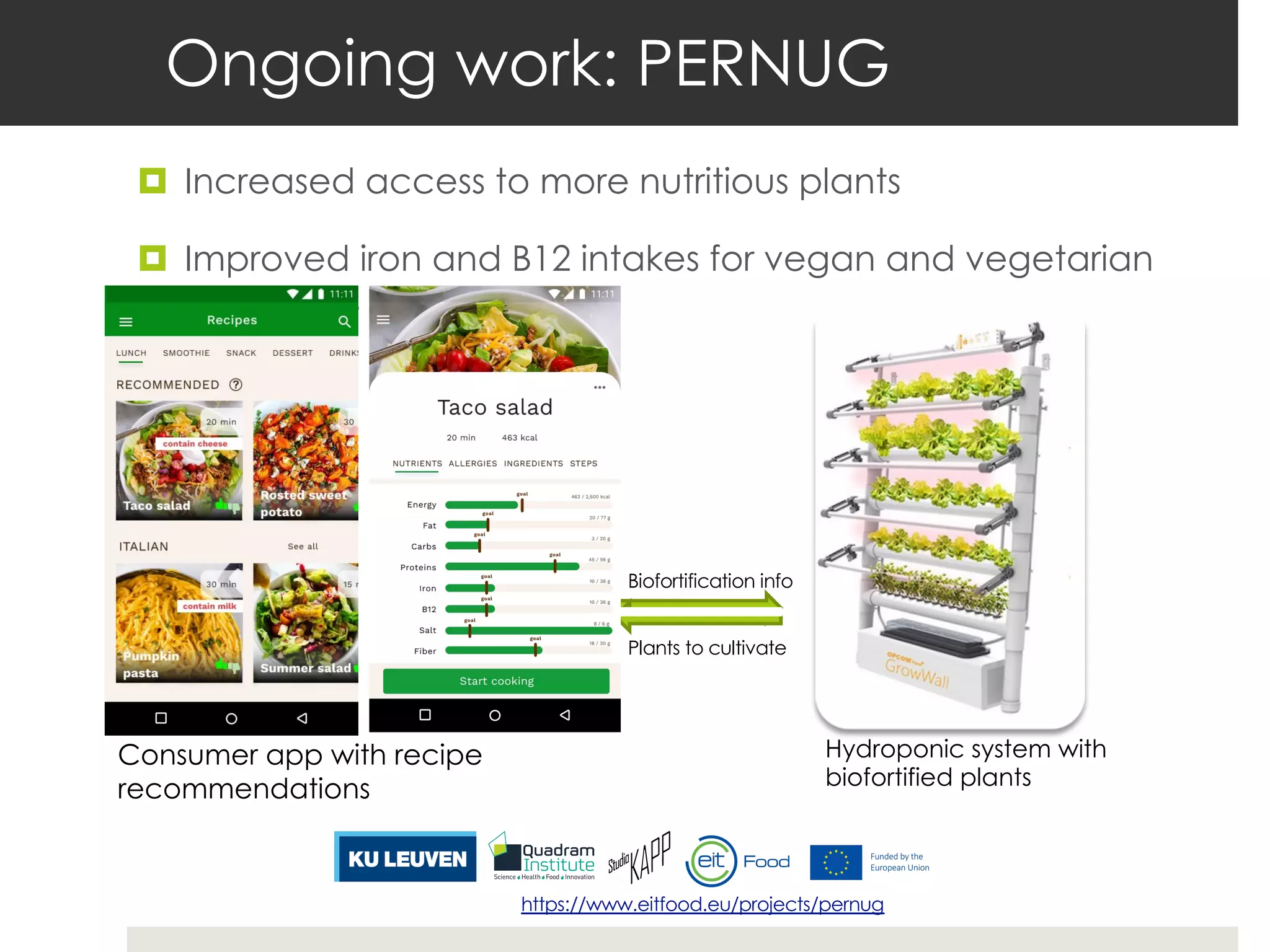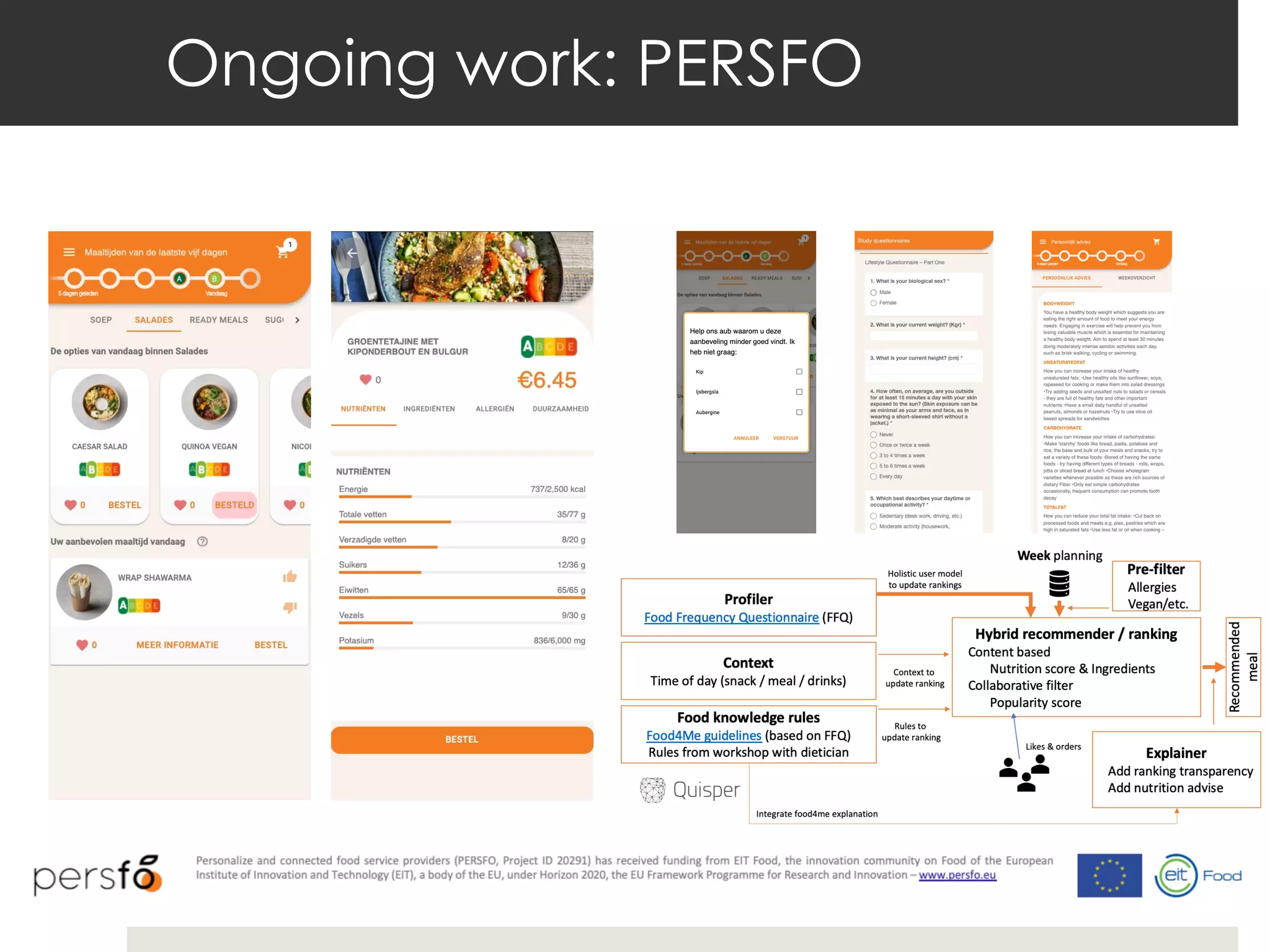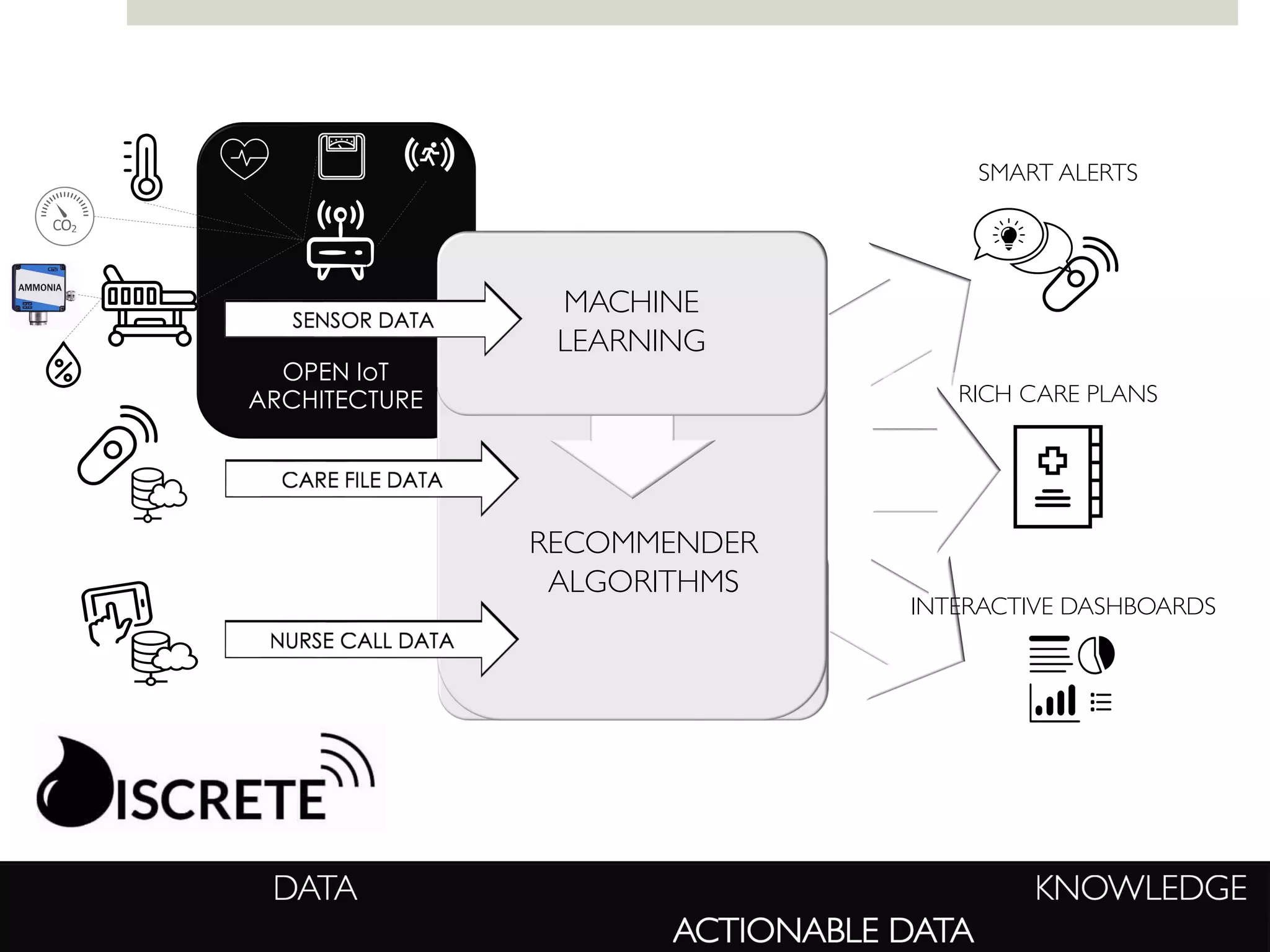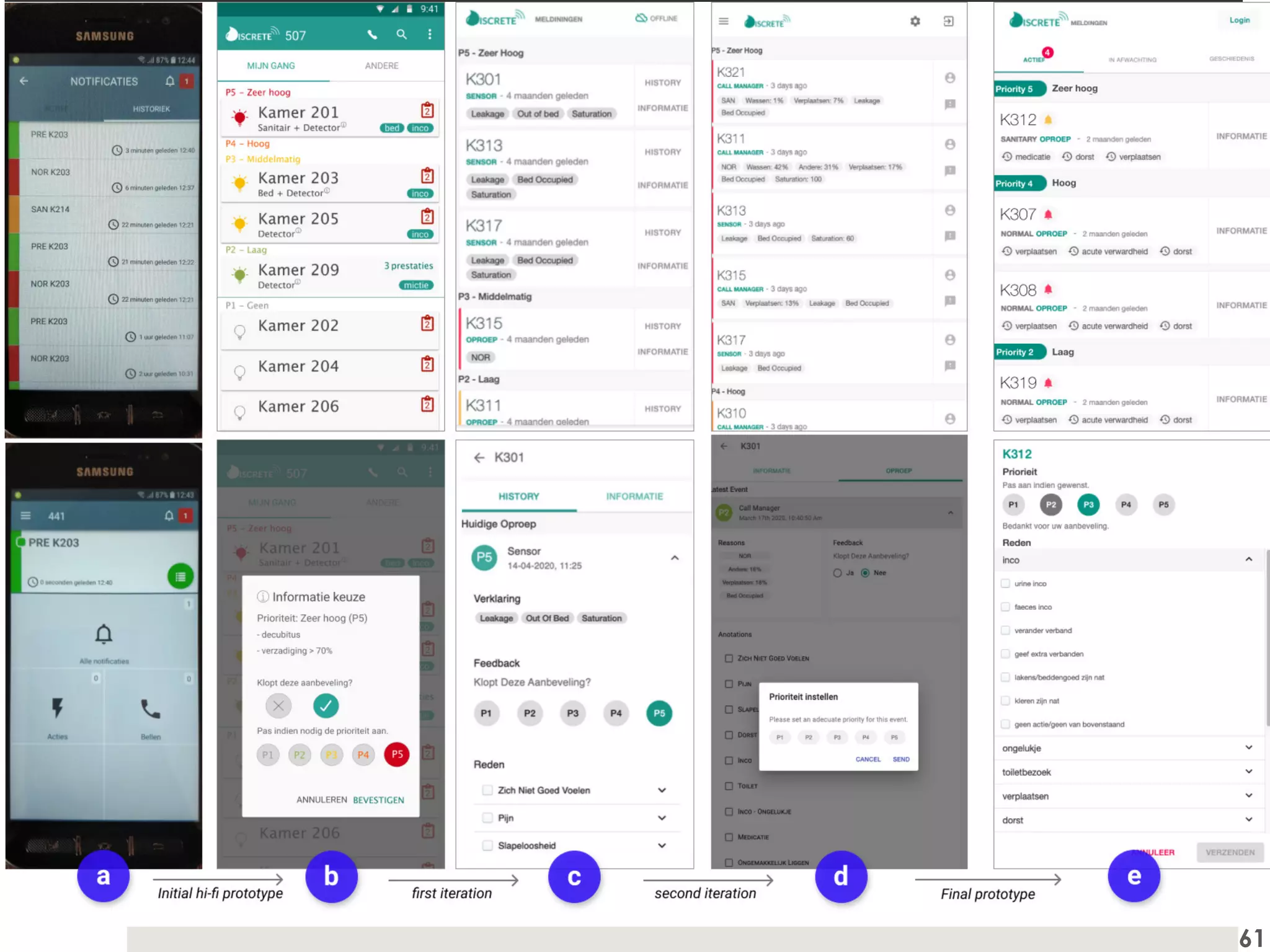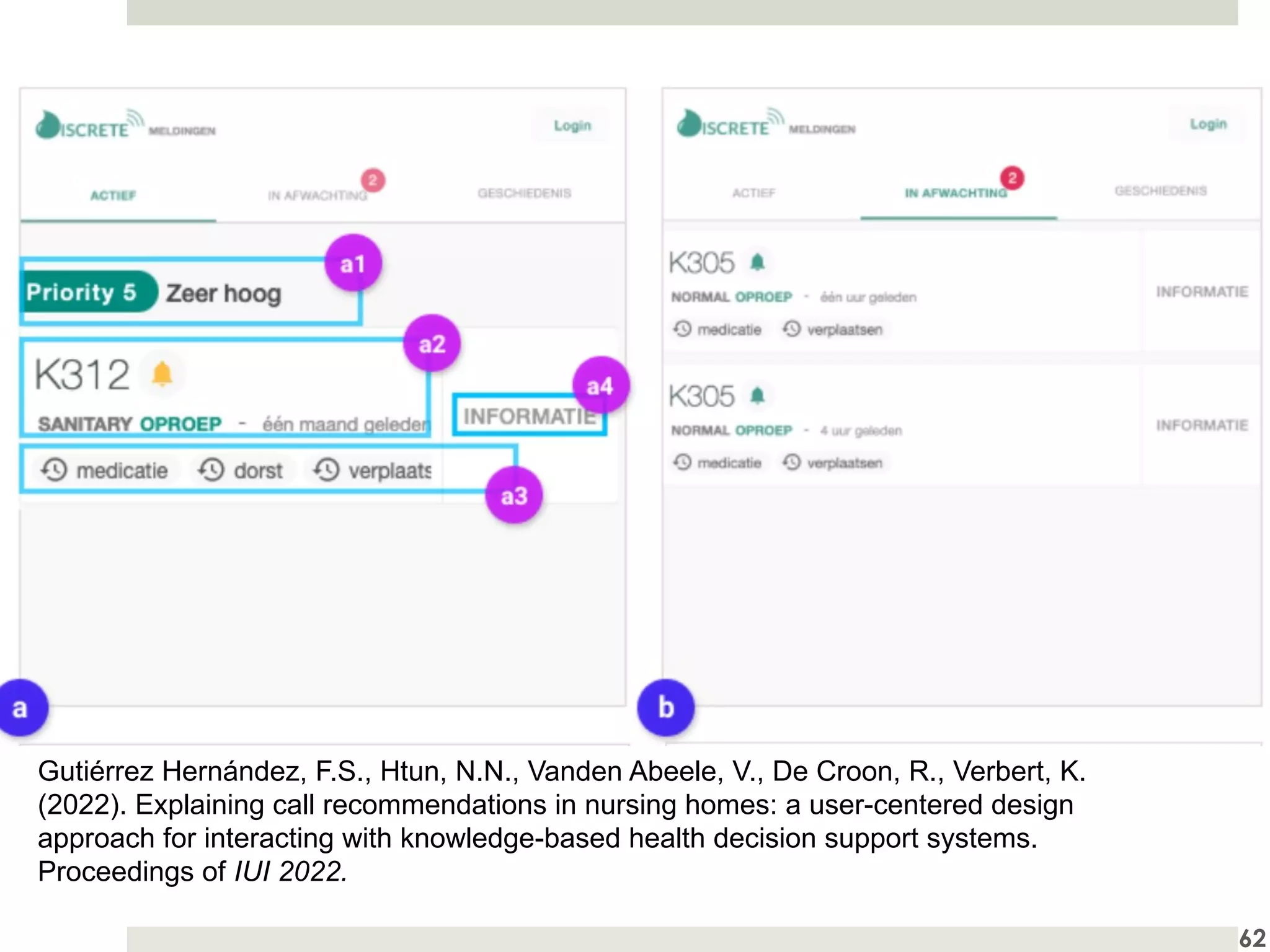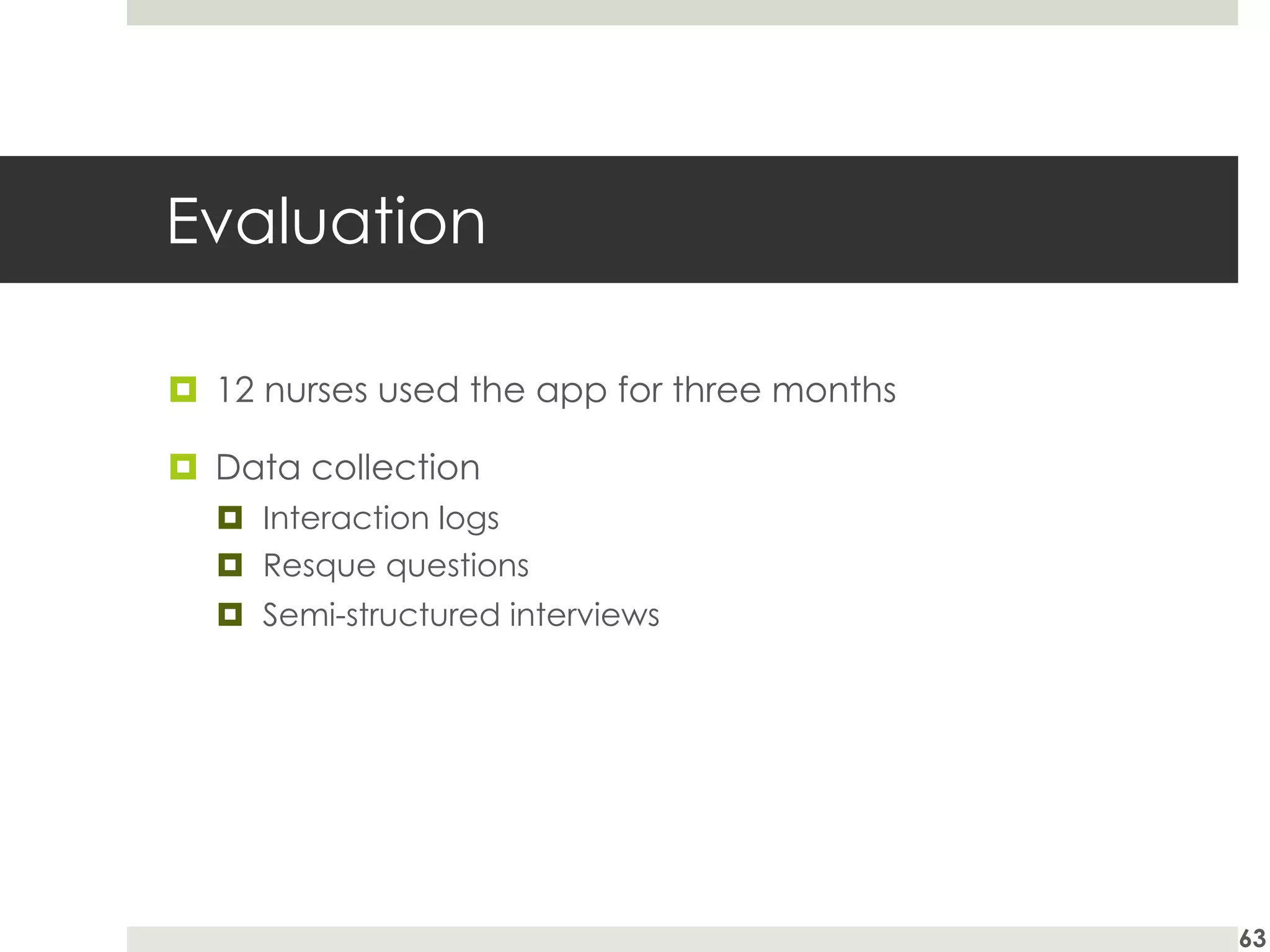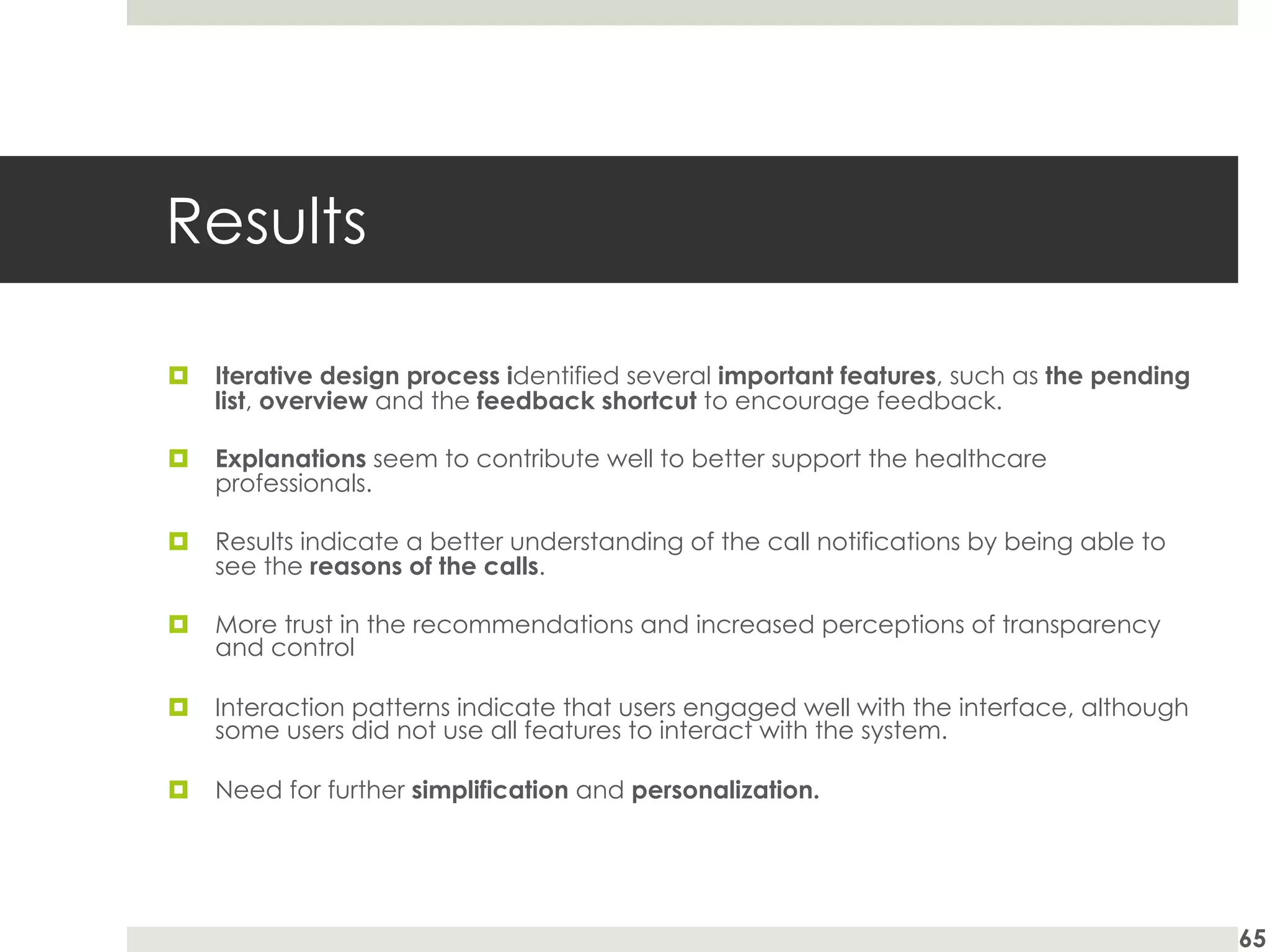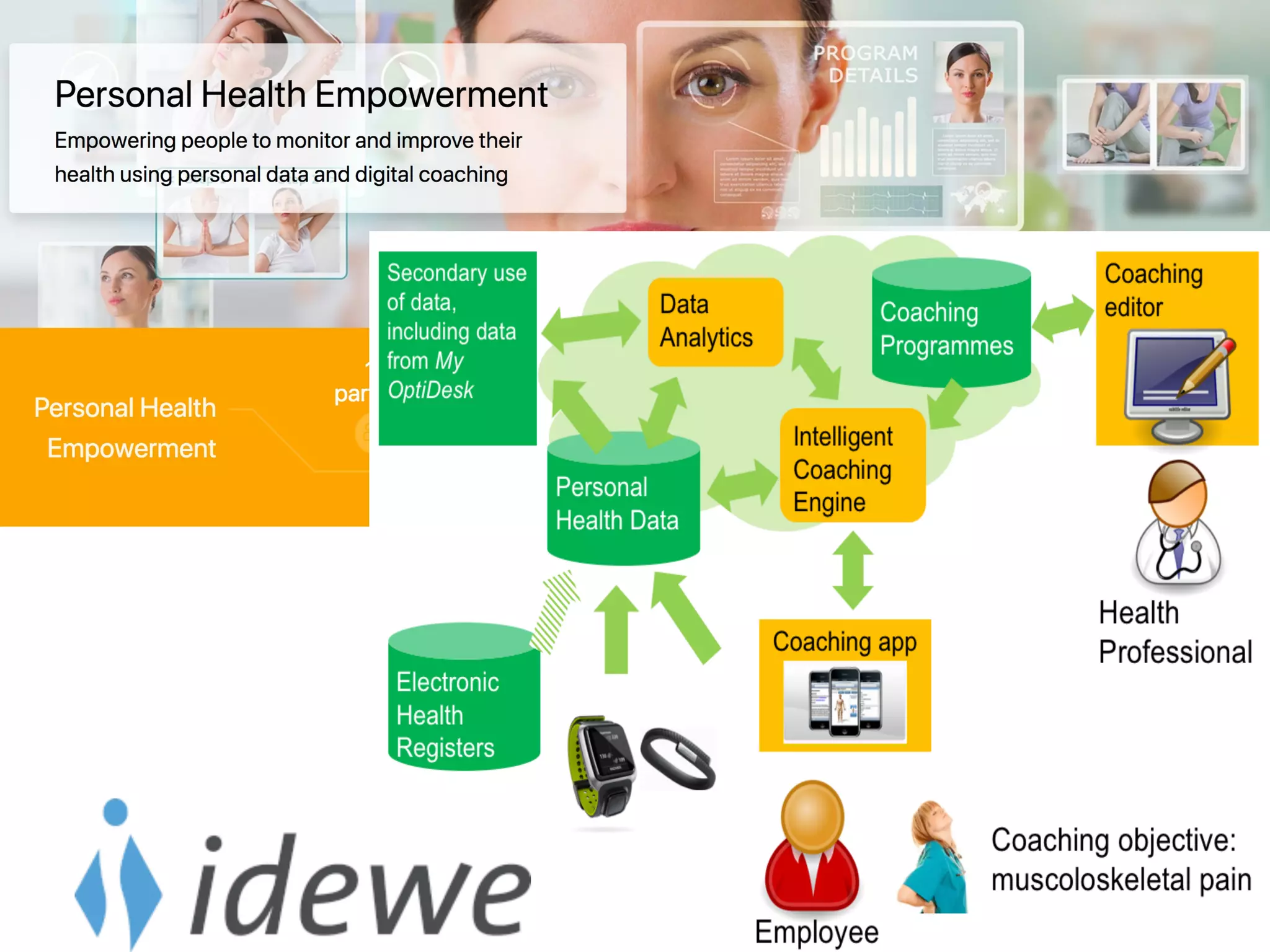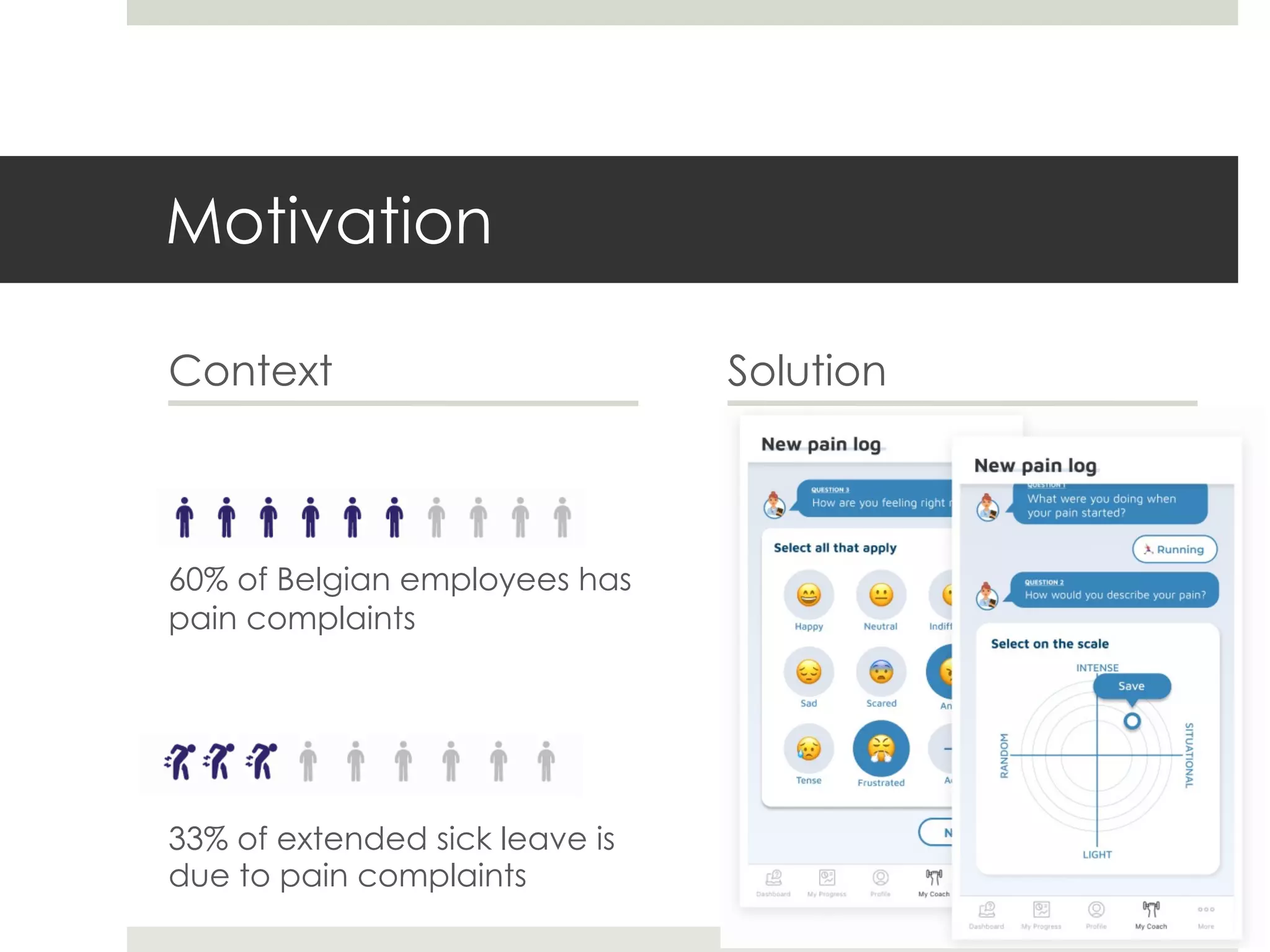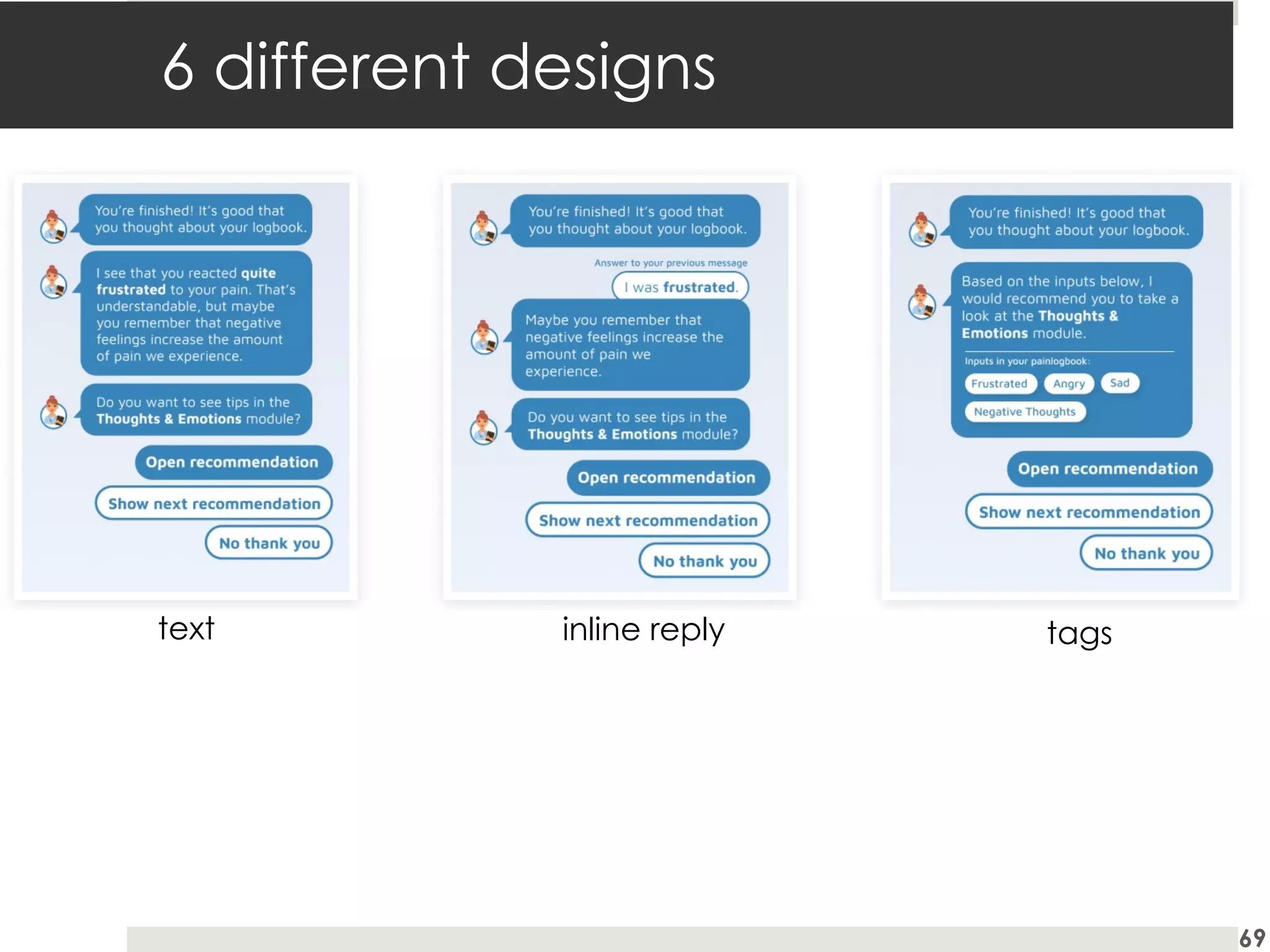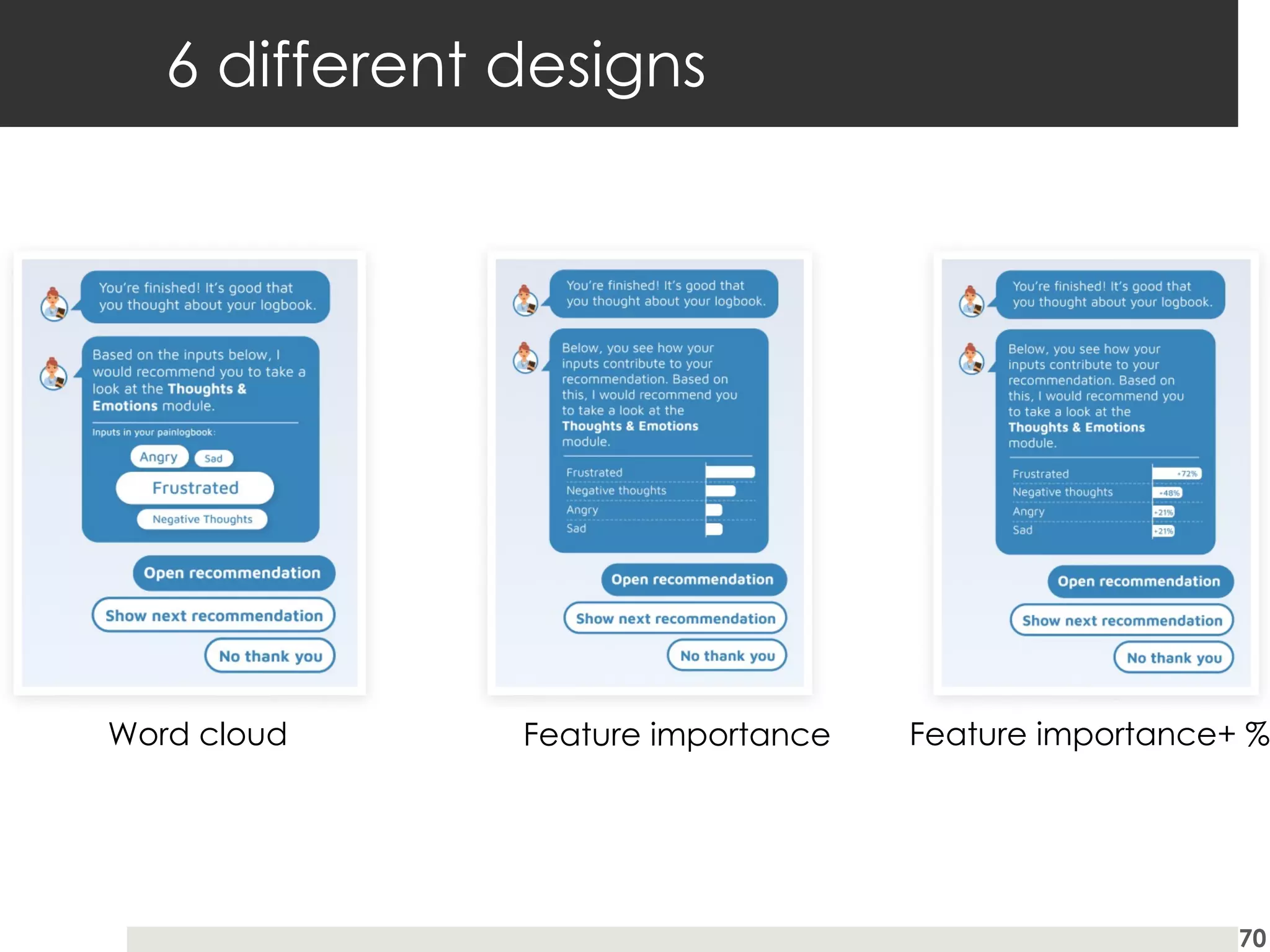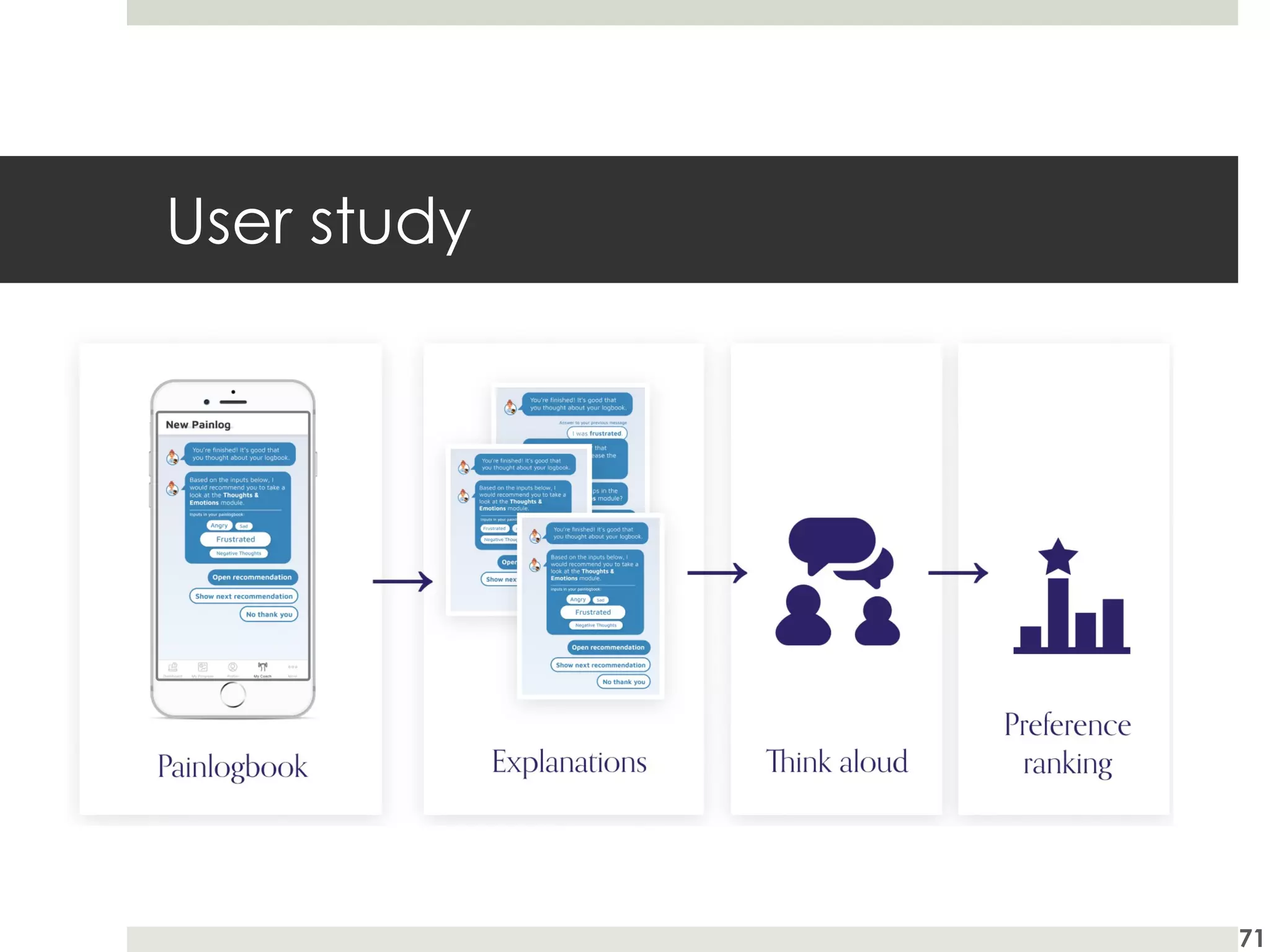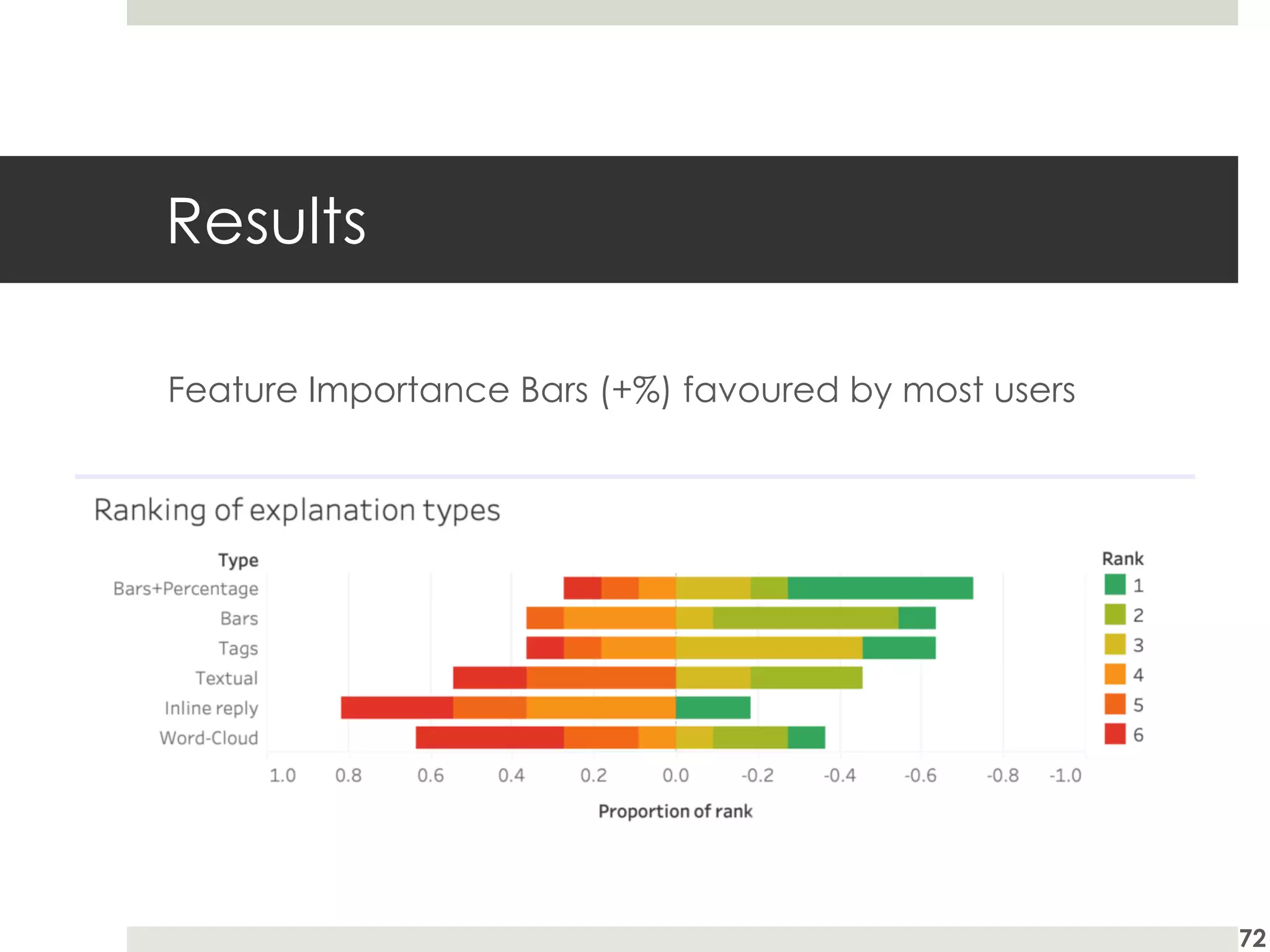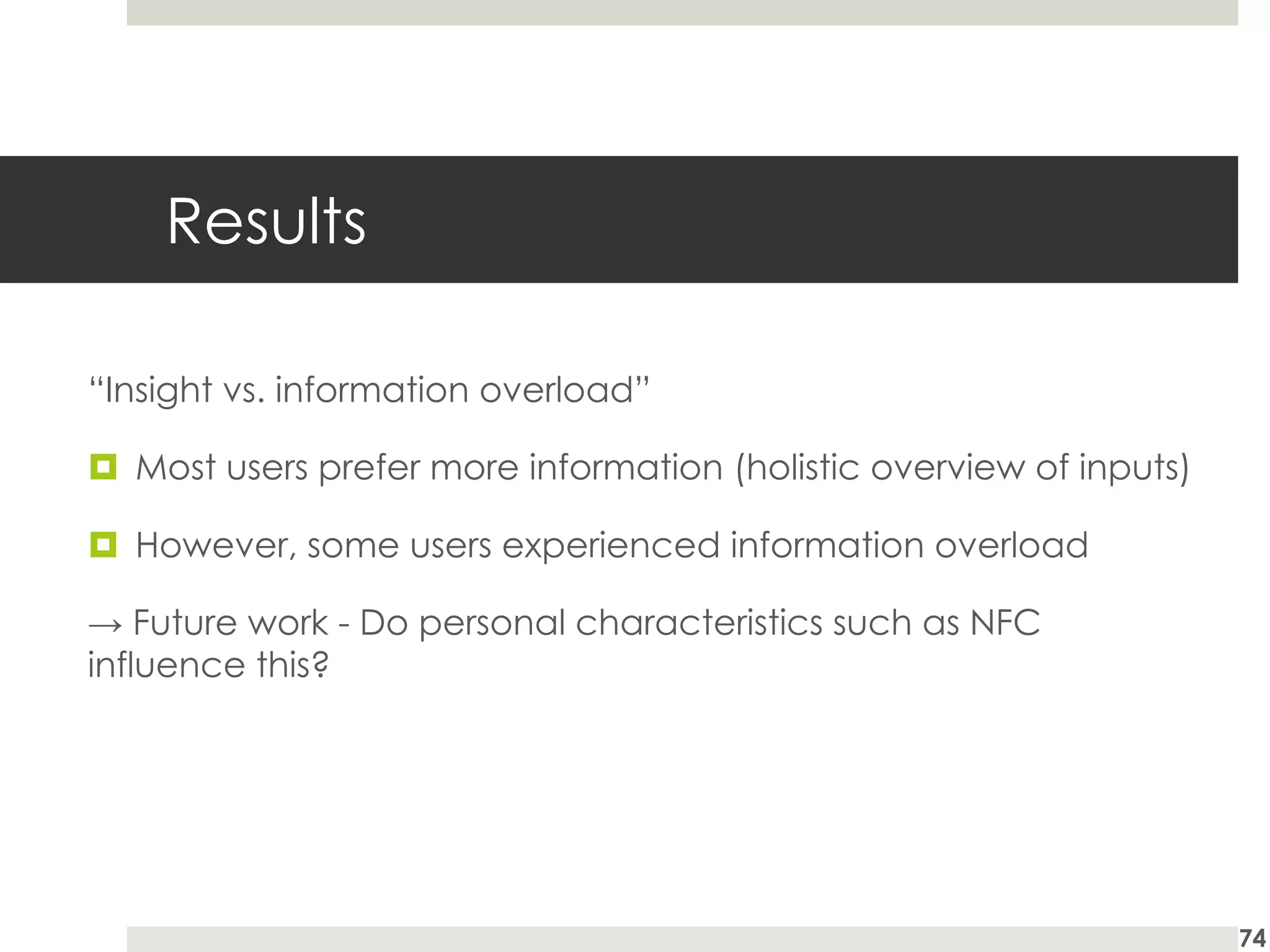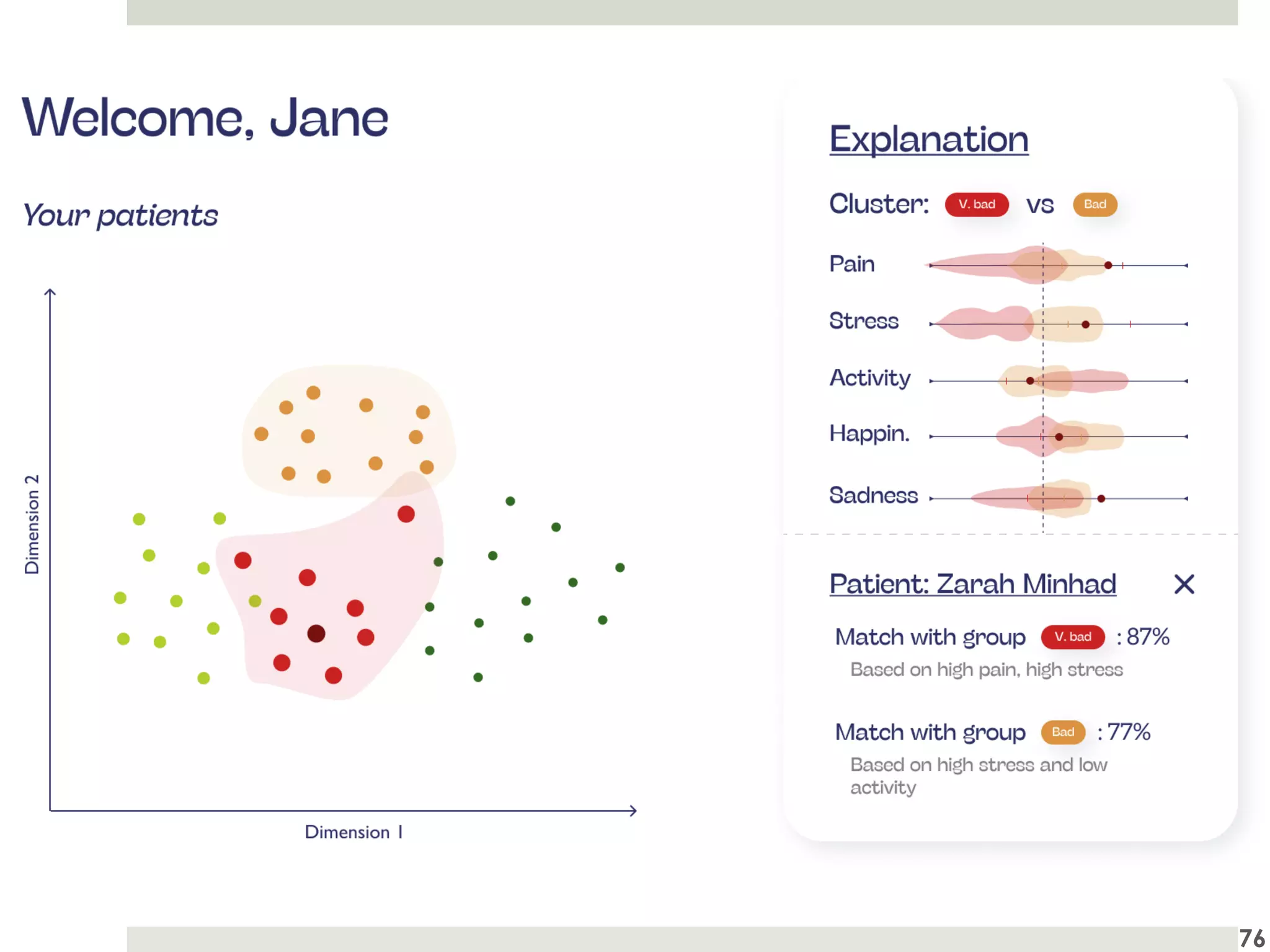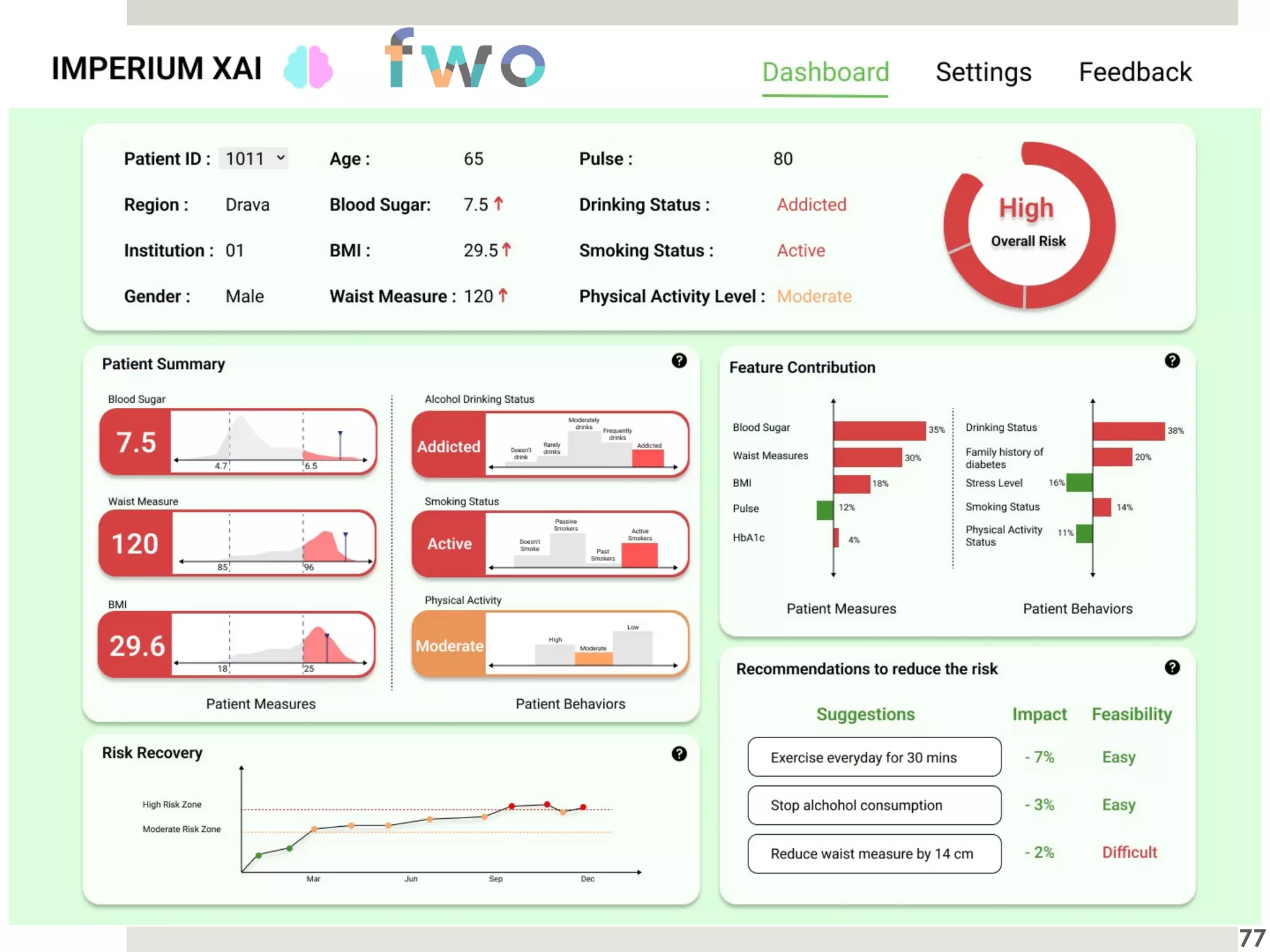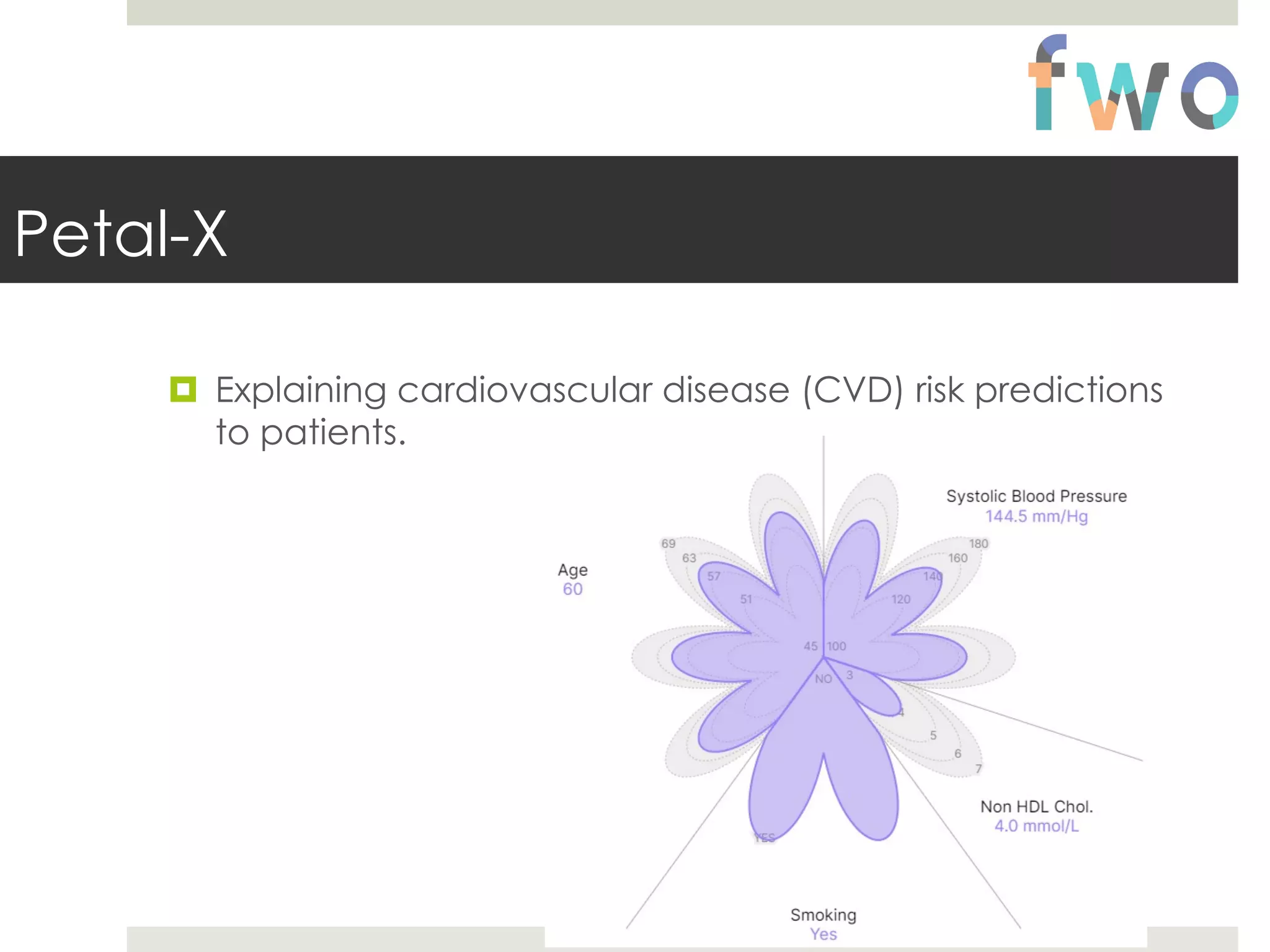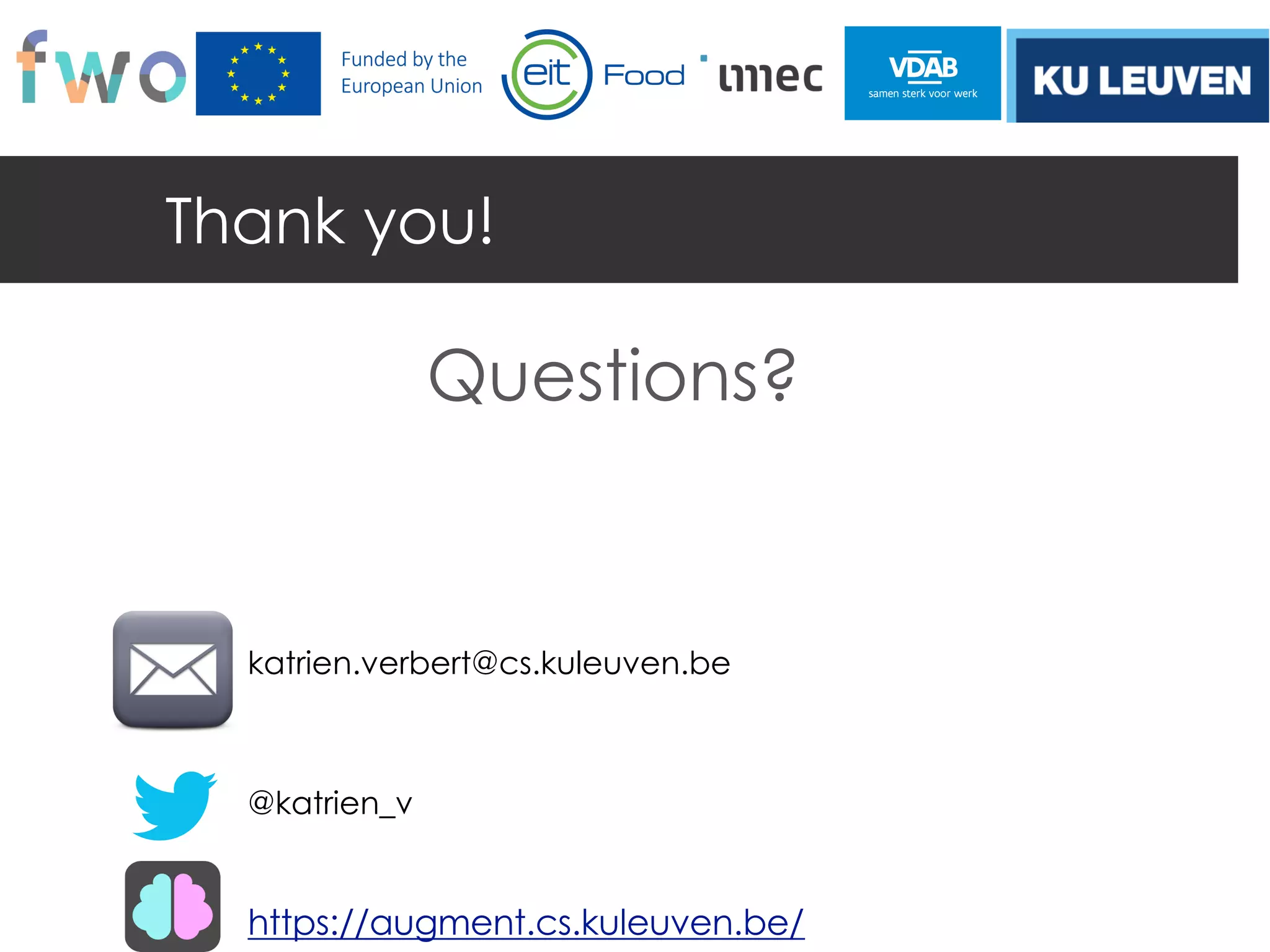The document describes research on human-centered AI and interactive explanation methods. It discusses explainable AI and the goals of explaining model outcomes to increase user trust and acceptance, and enabling users to interact with the explanation process to improve models. It then provides an overview of the Augment/HCI research group at KU Leuven and its work on explanation methods, recommendation techniques, and evaluating explanations through user studies.
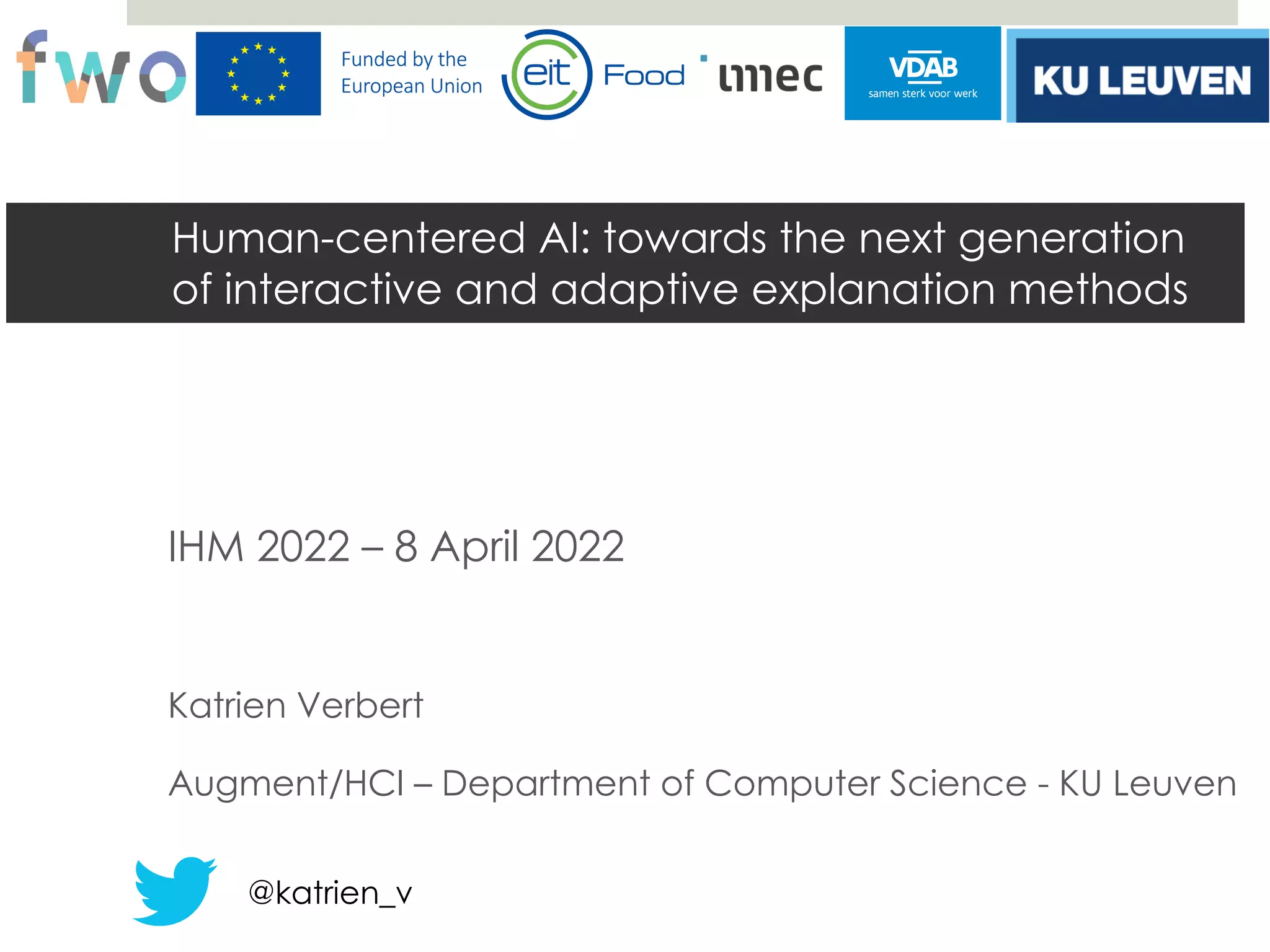


![Explainable Artificial Intelligence (XAI)
“Given an audience, an explainable artificial
intelligence is one that produces details or reasons
to make its functioning clear or easy to understand.”
[Arr20]
4
[Arr20] Arrieta, A. B., Díaz-Rodríguez, N., Del Ser, J., Bennetot, A., Tabik, S., Barbado, A., ... & Herrera, F. (2020). Explainable Artificial
Intelligence (XAI): Concepts, taxonomies, opportunities and challenges toward responsible AI. Information fusion, 58, 82-115.](https://image.slidesharecdn.com/xai-ihm-220419100430/75/Human-centered-AI-towards-the-next-generation-of-interactive-and-adaptive-explanation-methods-4-2048.jpg)
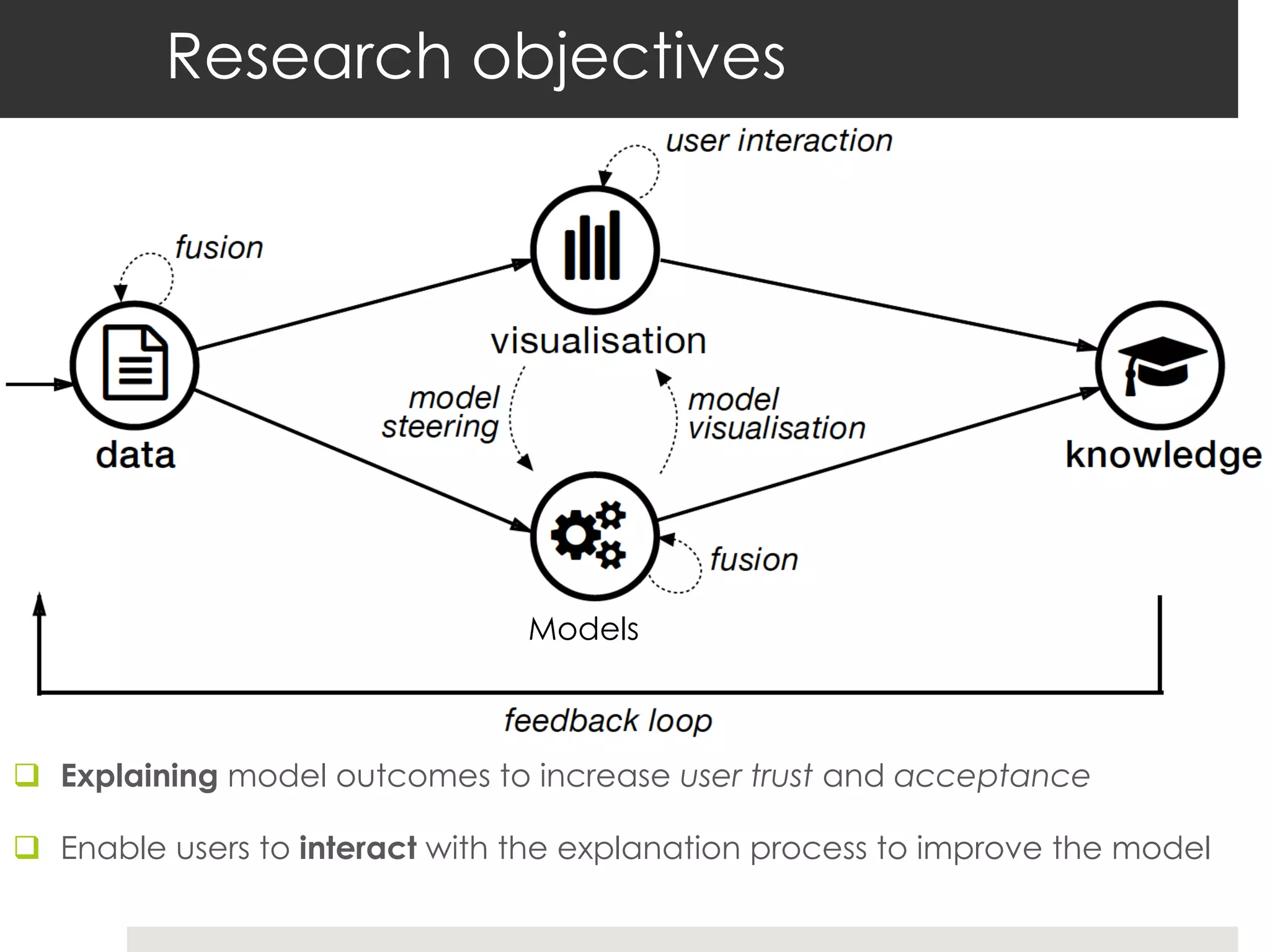
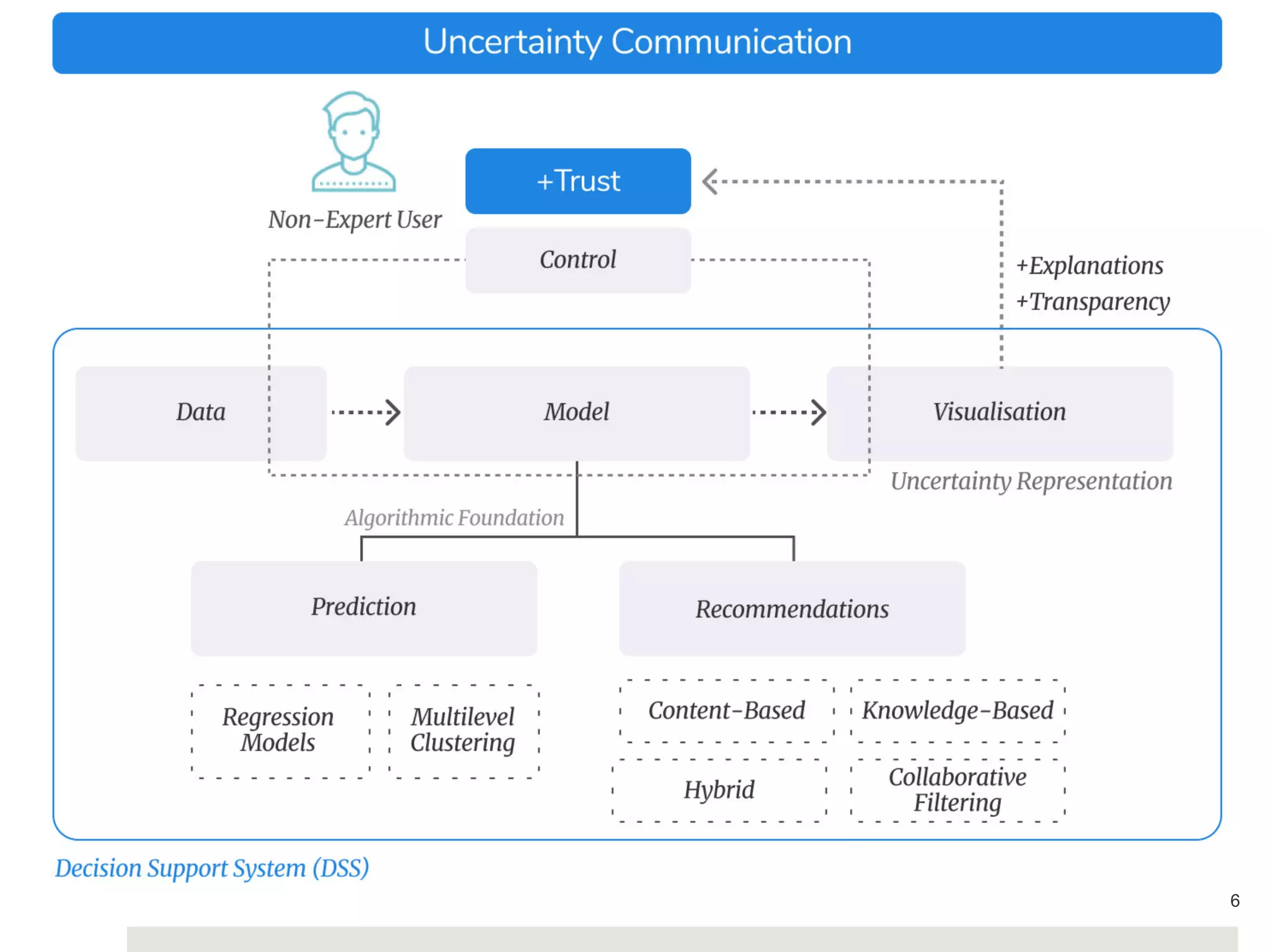
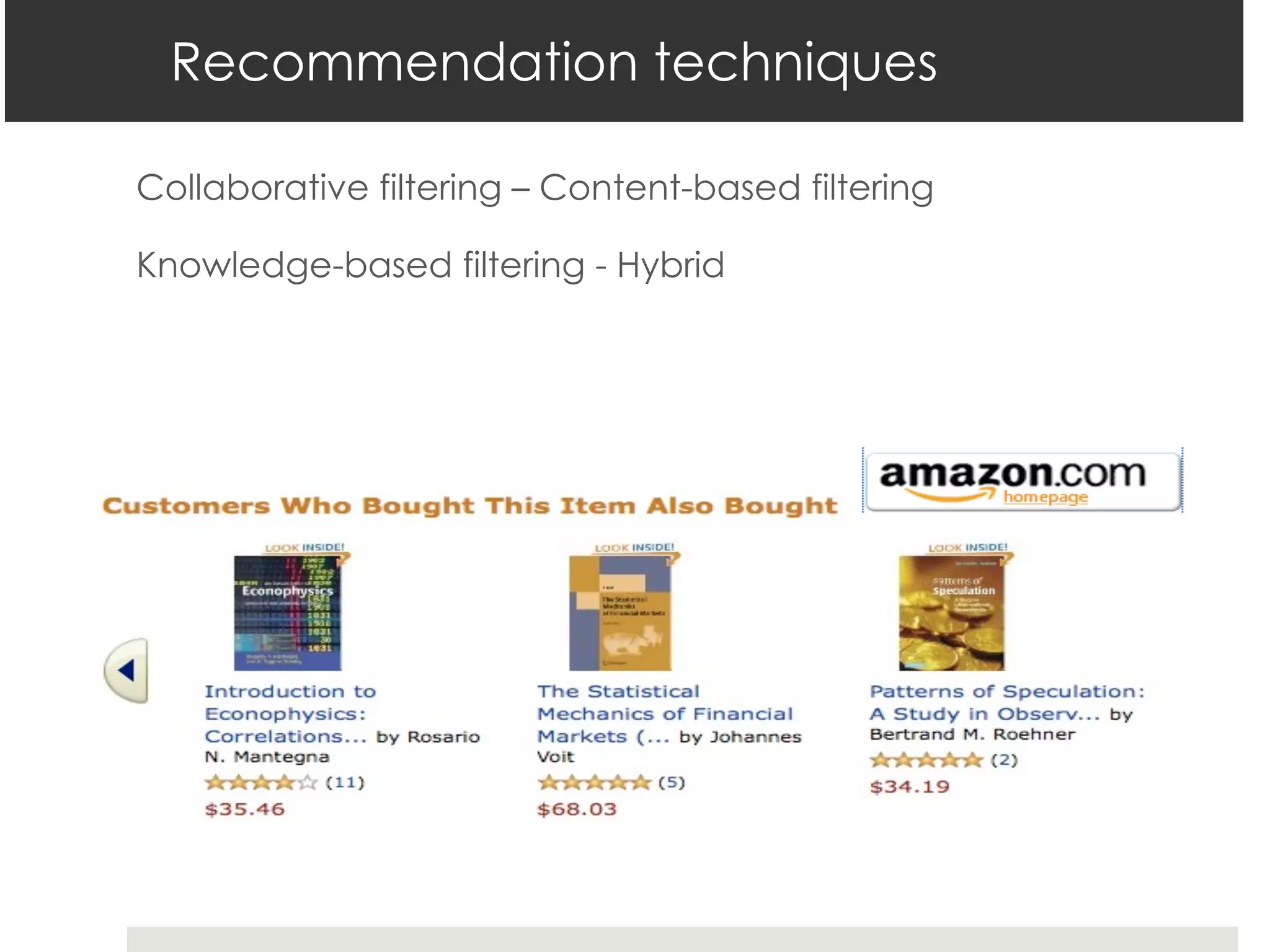

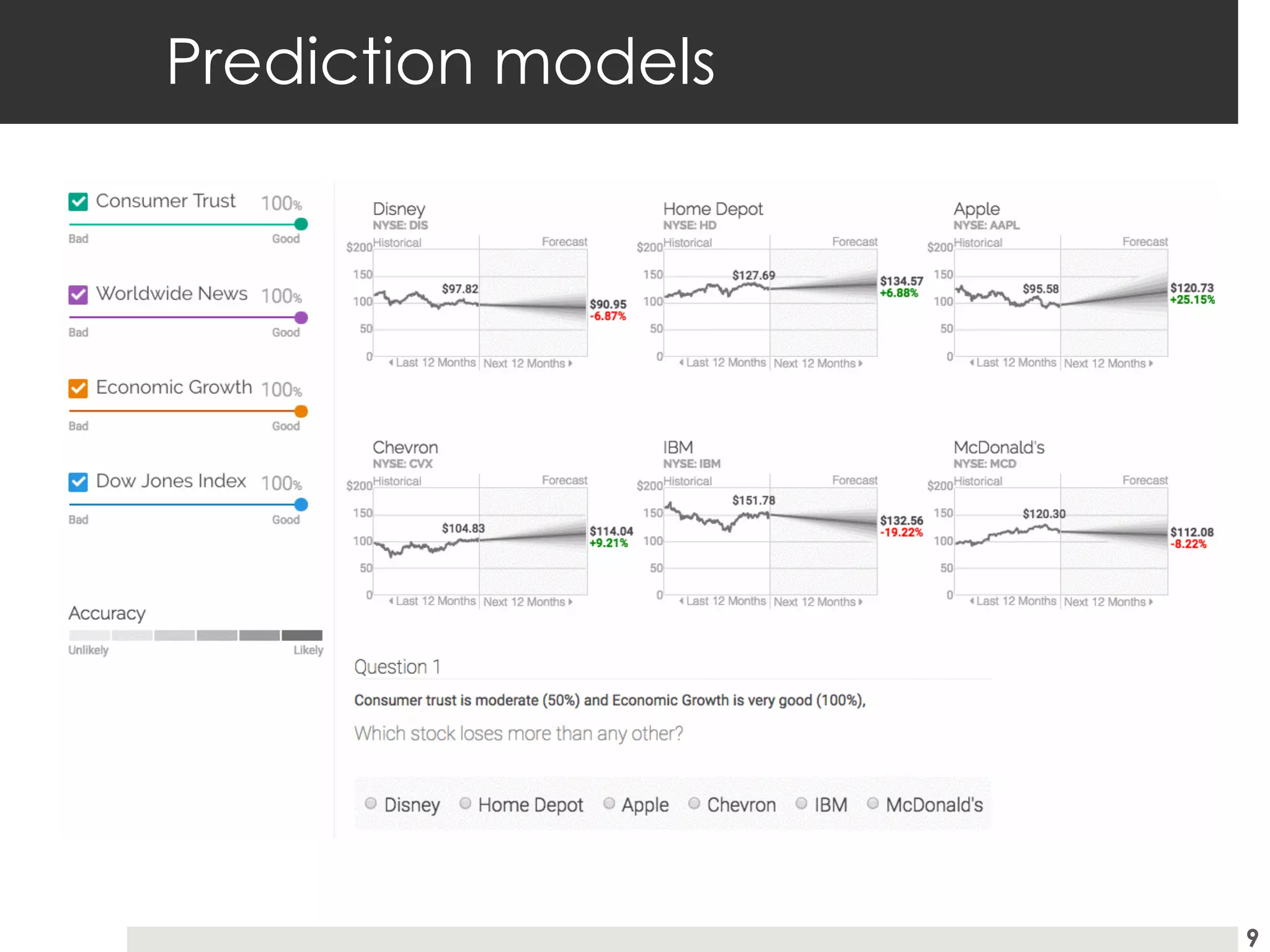
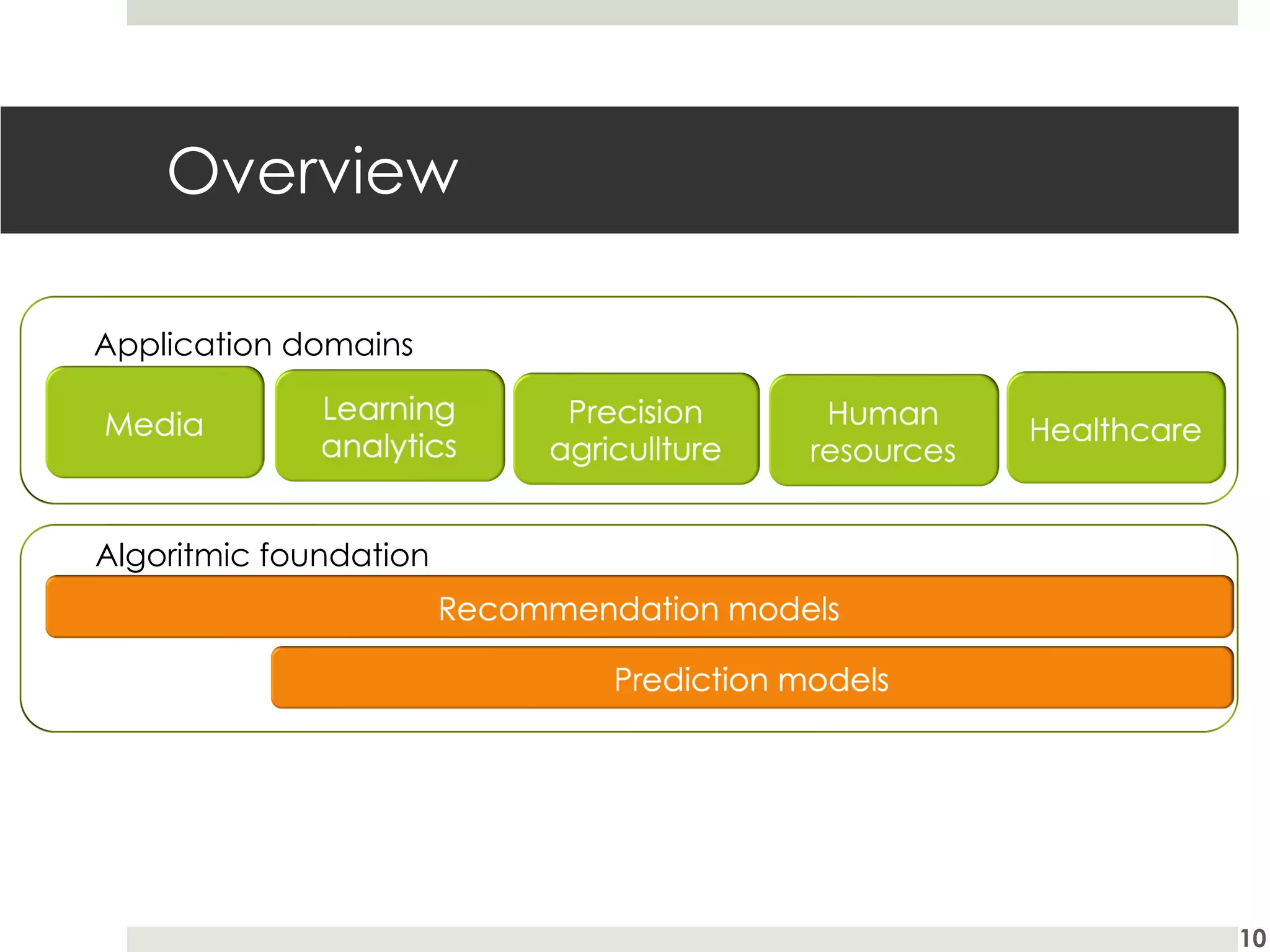
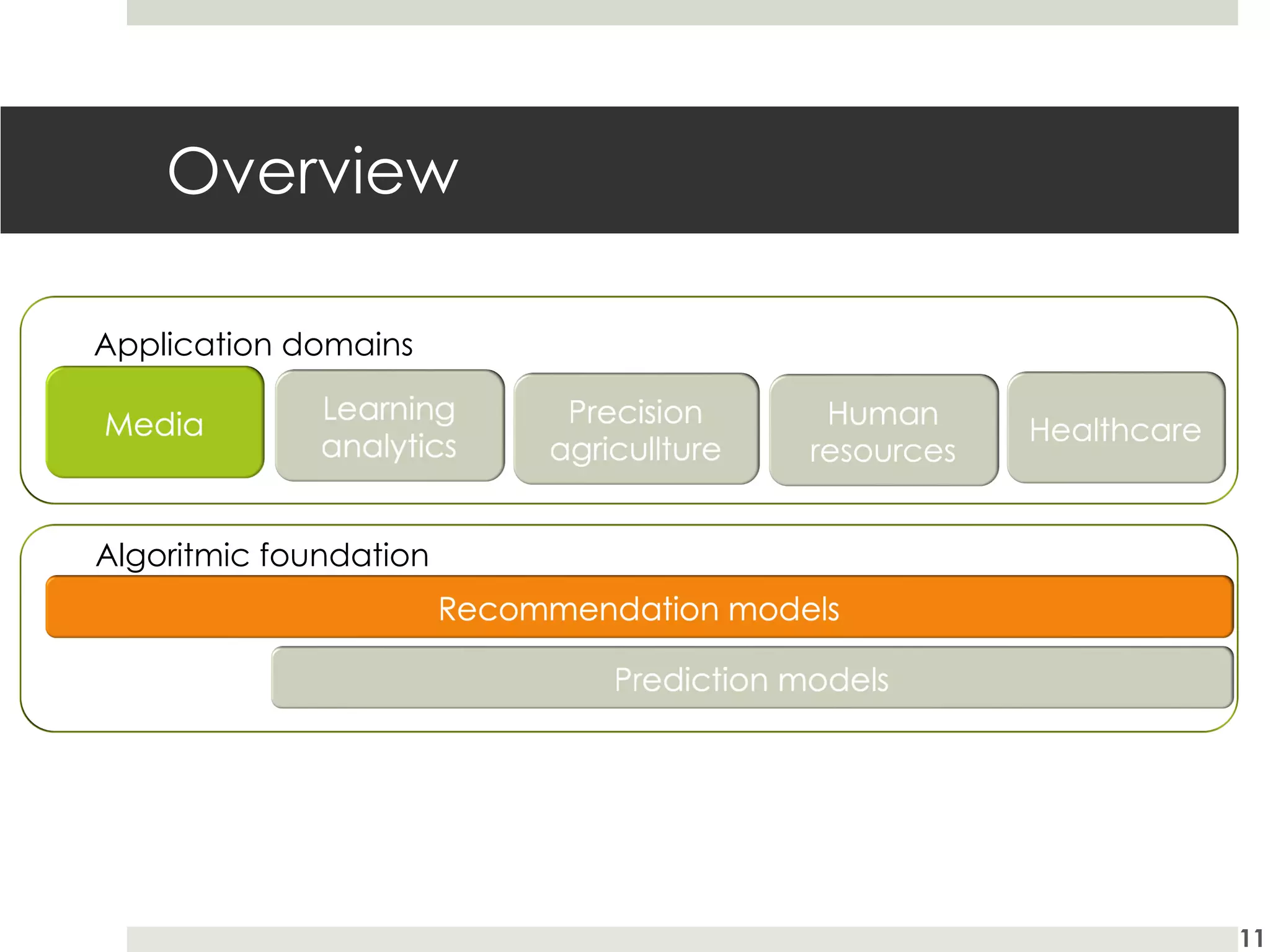
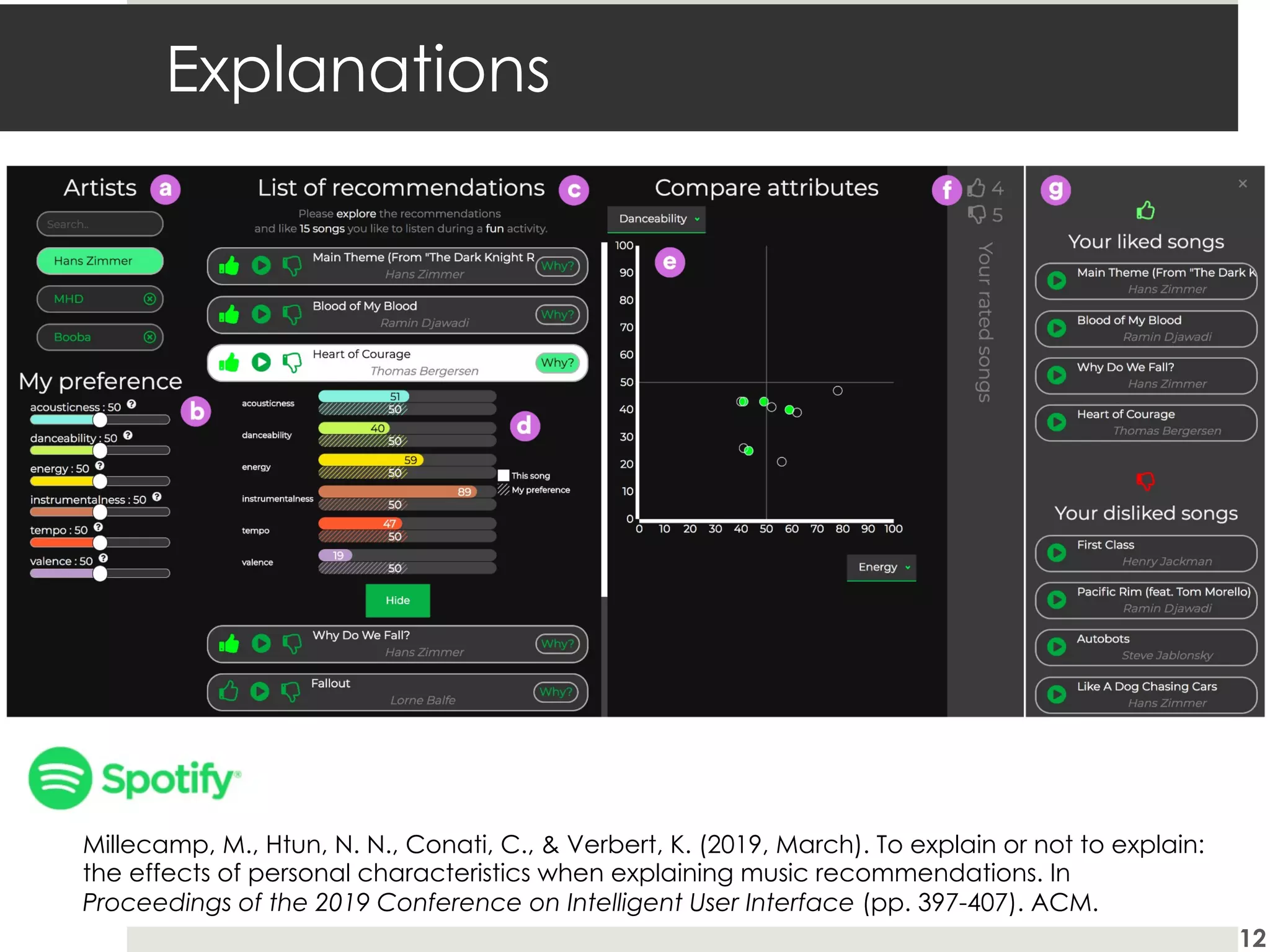
![Personal characteristics
Need for cognition
•Measurement of the tendency for an individual to engage in, and enjoy, effortful cognitive
activities
•Measured by test of Cacioppo et al. [1984]
Visualisation literacy
•Measurement of the ability to interpret and make meaning from information presented in the form
of images and graphs
•Measured by test of Boy et al. [2014]
Locus of control (LOC)
•Measurement of the extent to which people believe they have power over events in their lives
•Measured by test of Rotter et al. [1966]
Visual working memory
•Measurement of the ability to recall visual patterns [Tintarev and Mastoff, 2016]
•Measured by Corsi block-tapping test
Musical experience
•Measurement of the ability to engage with music in a flexible, effective and nuanced way
[Müllensiefen et al., 2014]
•Measured using the Goldsmiths Musical Sophistication Index (Gold-MSI)
Tech savviness
•Measured by confidence in trying out new technology 13](https://image.slidesharecdn.com/xai-ihm-220419100430/75/Human-centered-AI-towards-the-next-generation-of-interactive-and-adaptive-explanation-methods-13-2048.jpg)
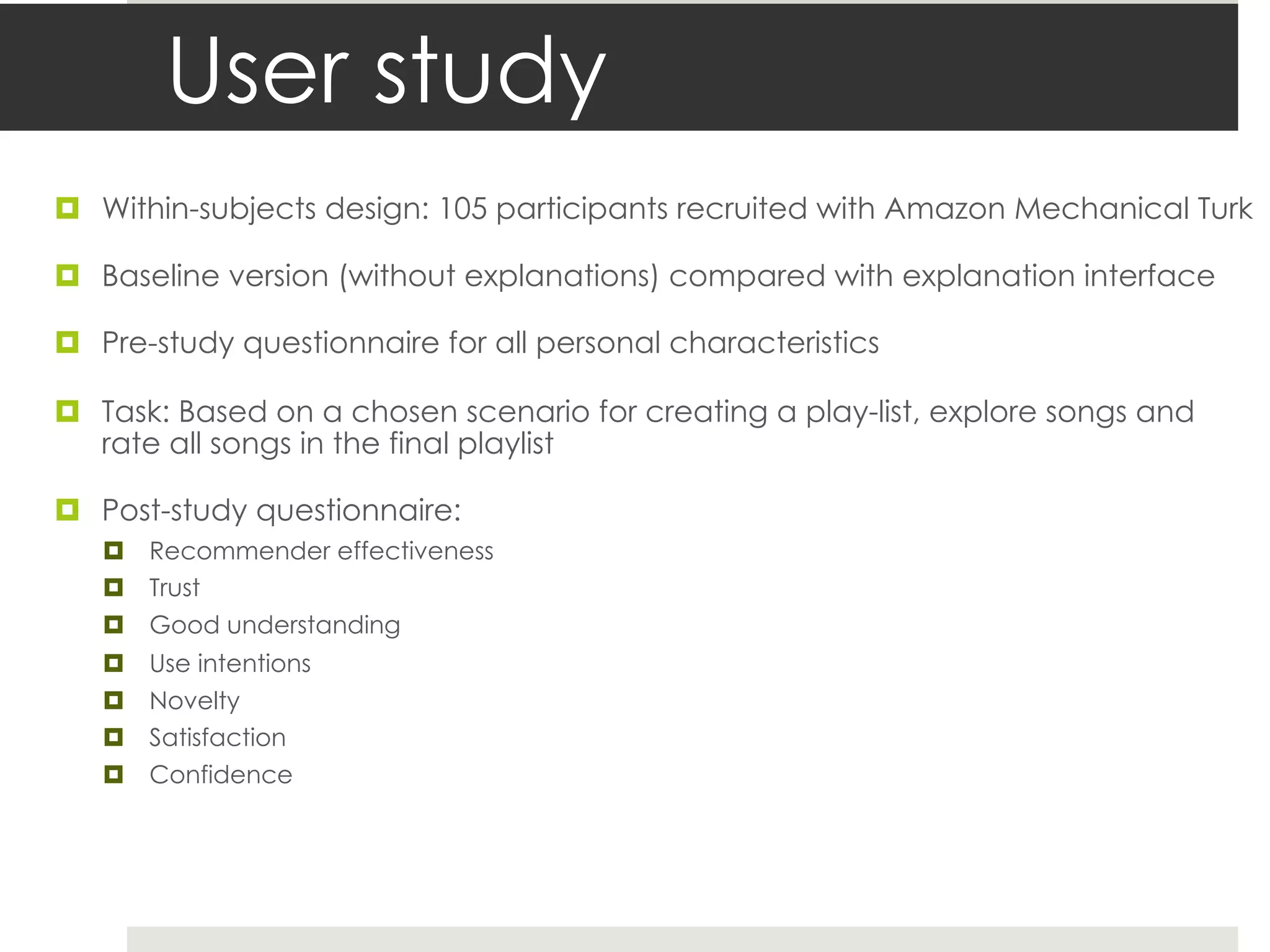
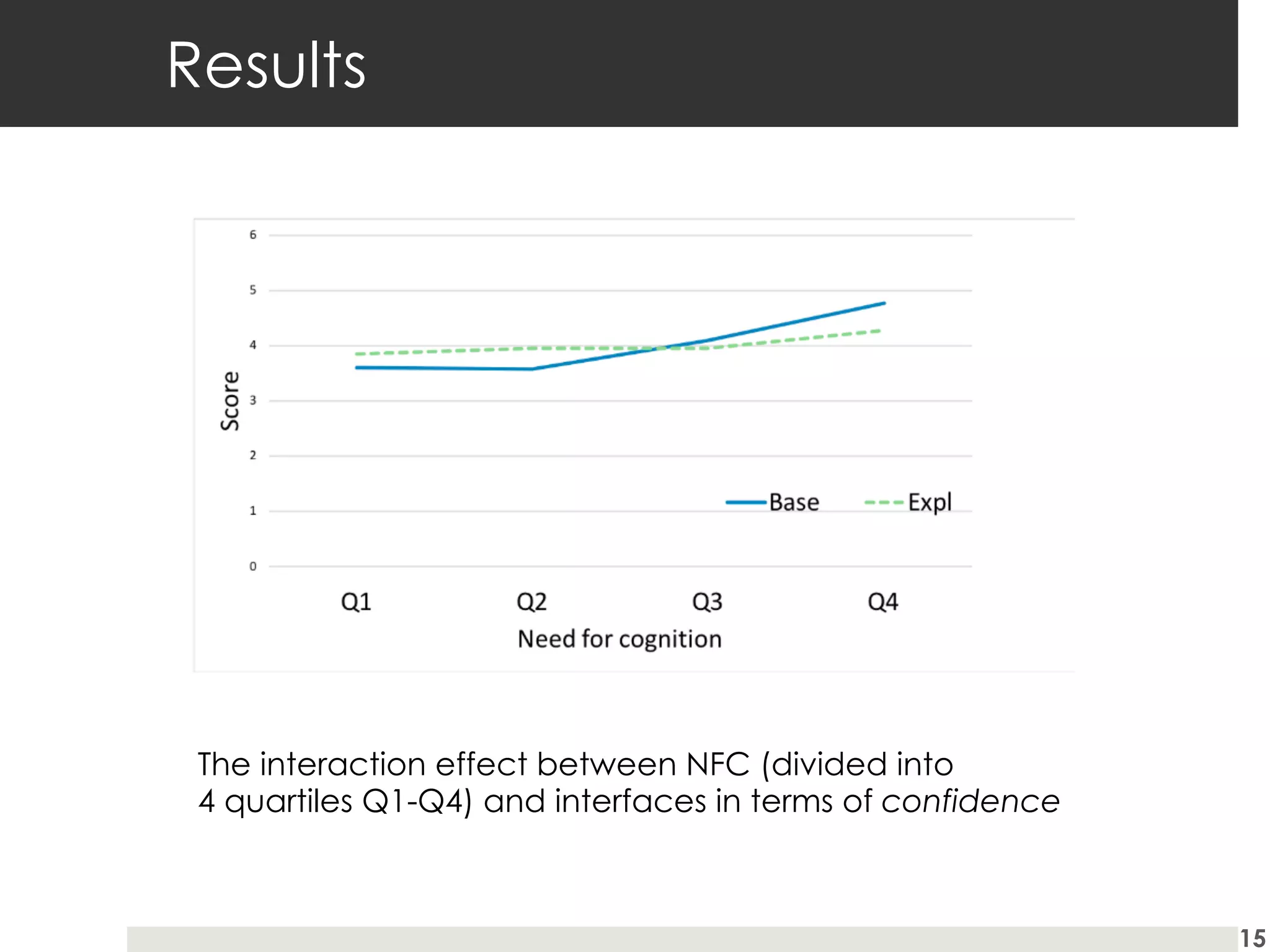
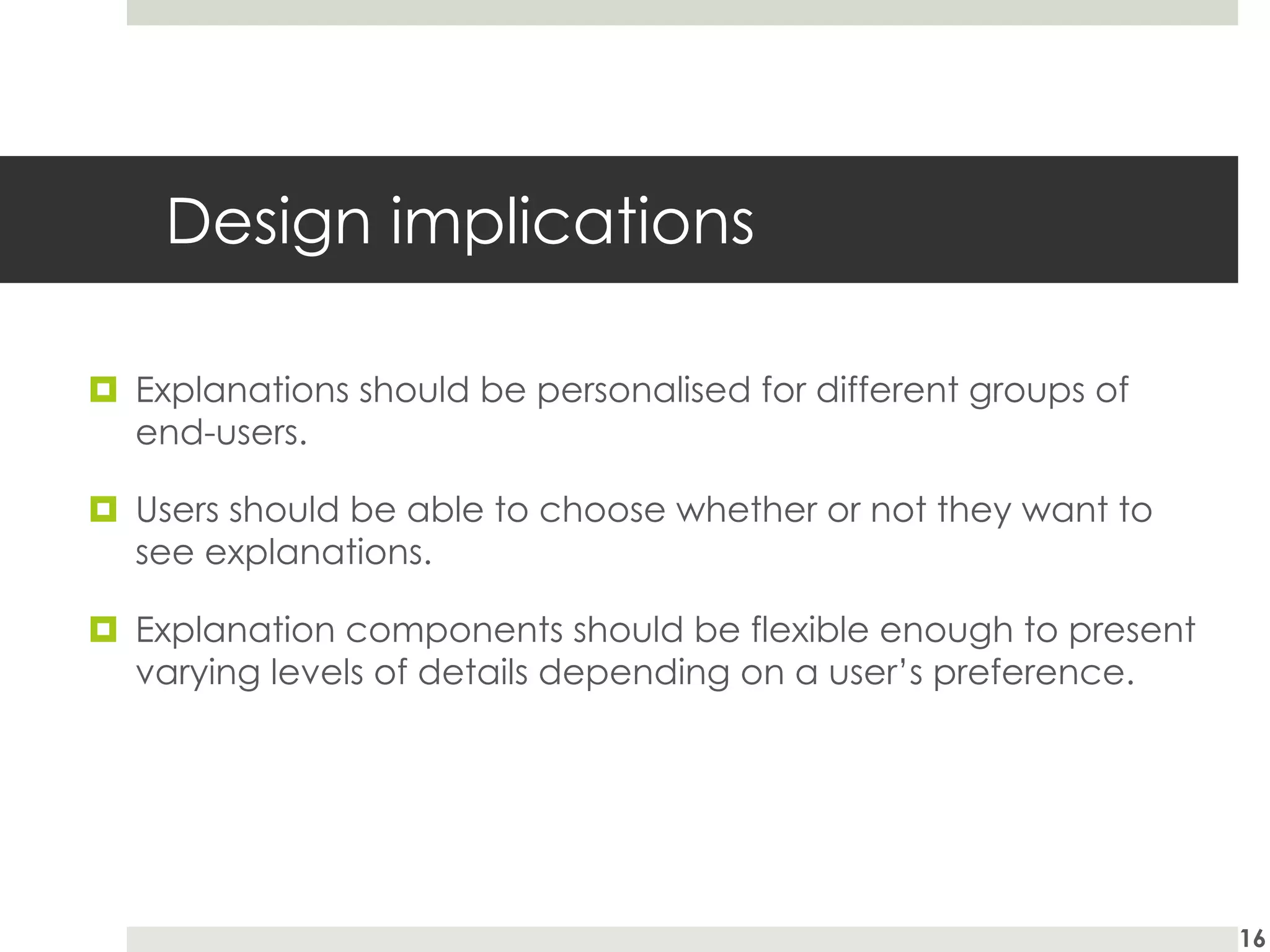
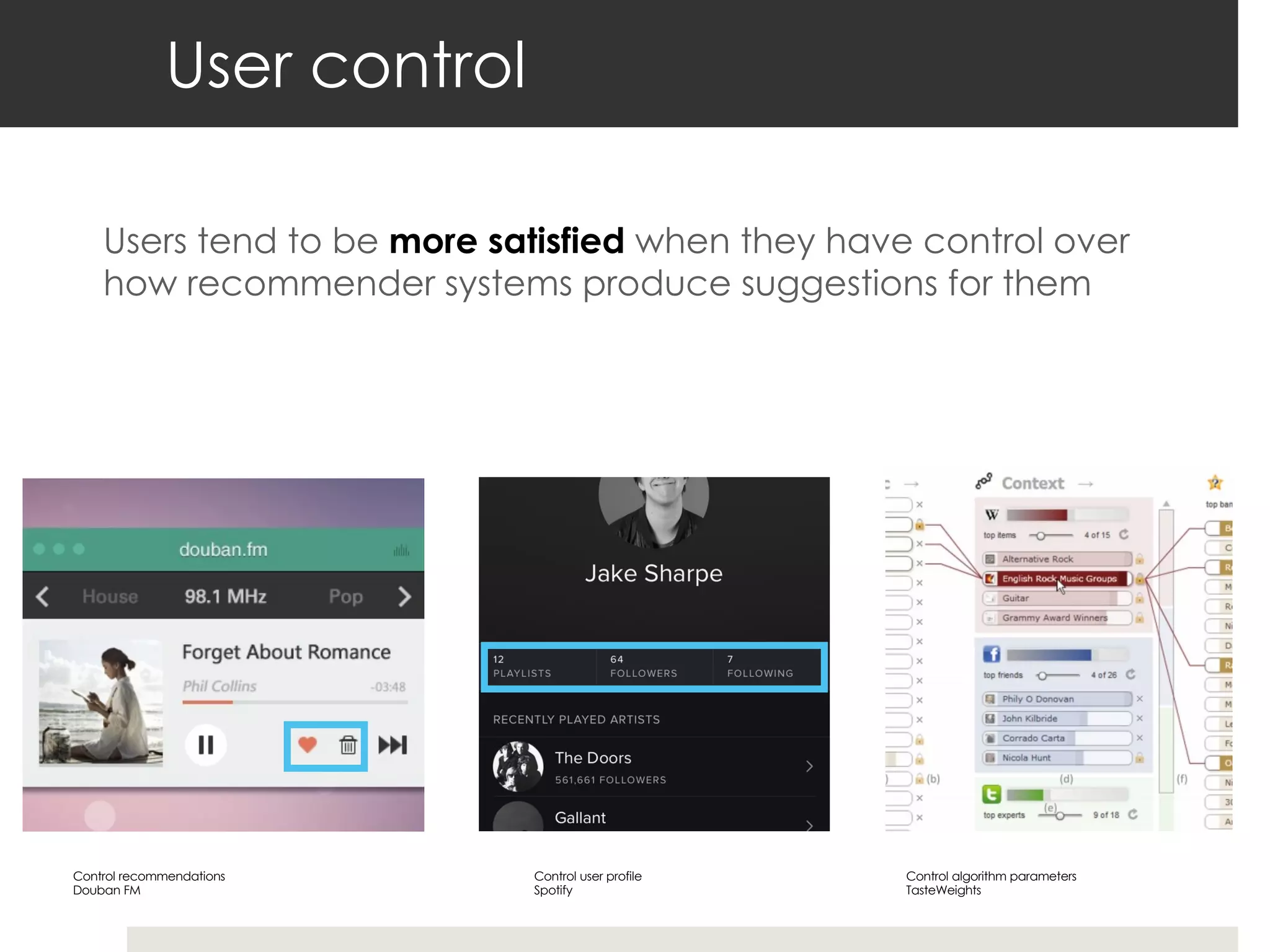

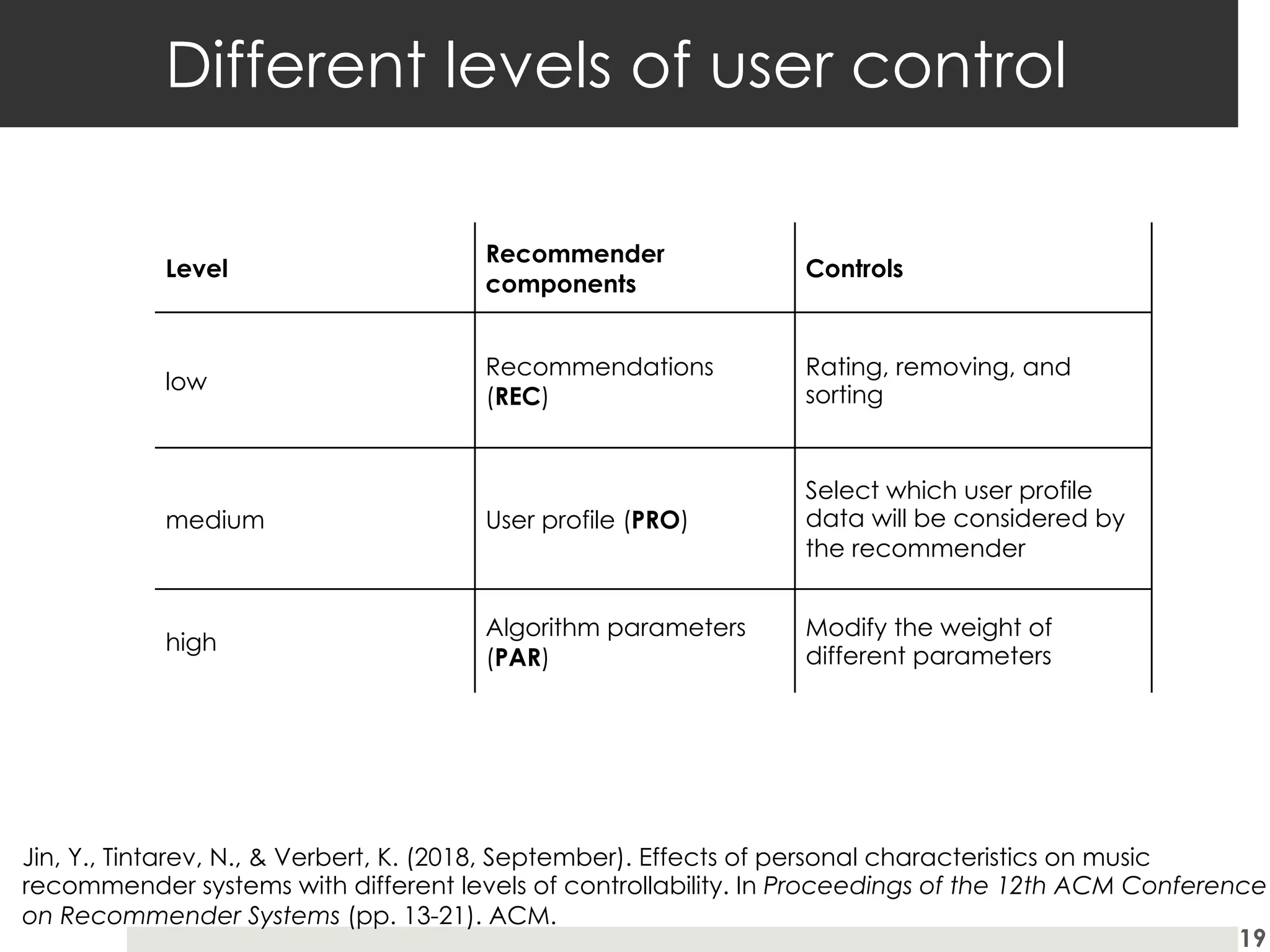
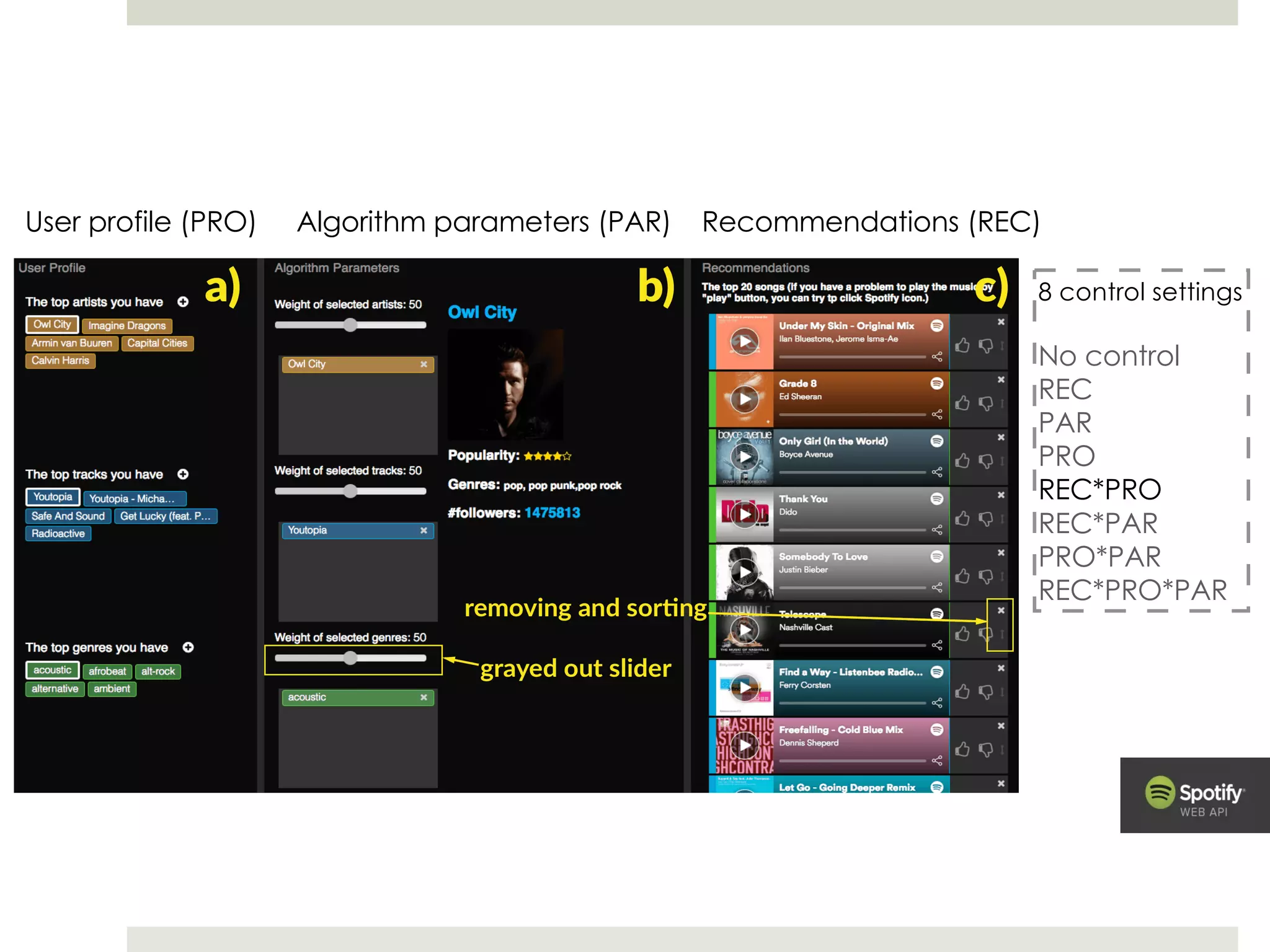
![Evaluation method
¤ Between-subjects – 240 participants recruited with AMT
¤ Independent variable: settings of user control
¤ 2x2x2 factorial design
¤ Dependent variables:
¤ Acceptance (ratings)
¤ Cognitive load (NASA-TLX), Musical Sophistication, Visual Memory
¤ Framework Knijnenburg et al. [2012]](https://image.slidesharecdn.com/xai-ihm-220419100430/75/Human-centered-AI-towards-the-next-generation-of-interactive-and-adaptive-explanation-methods-21-2048.jpg)
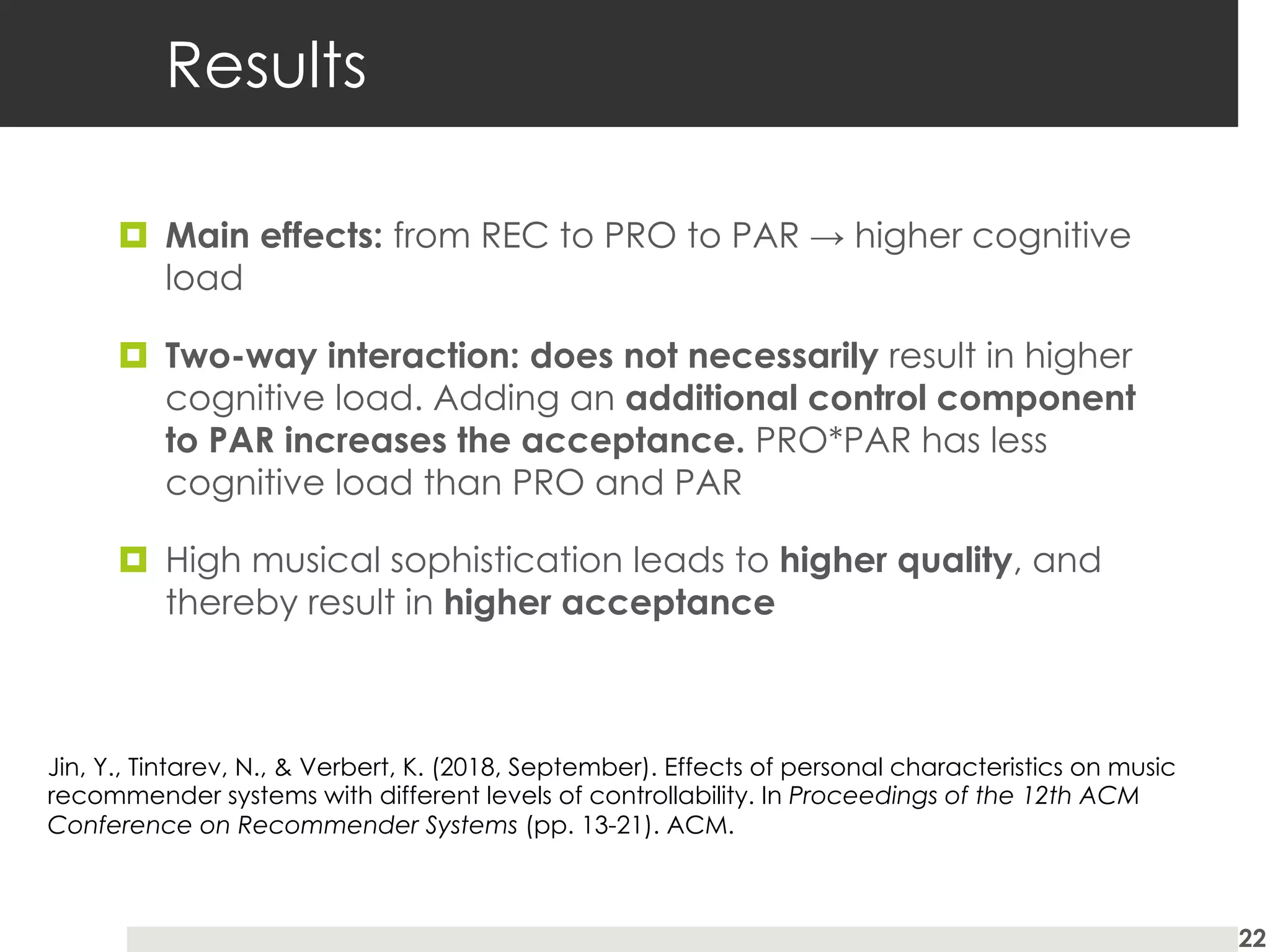
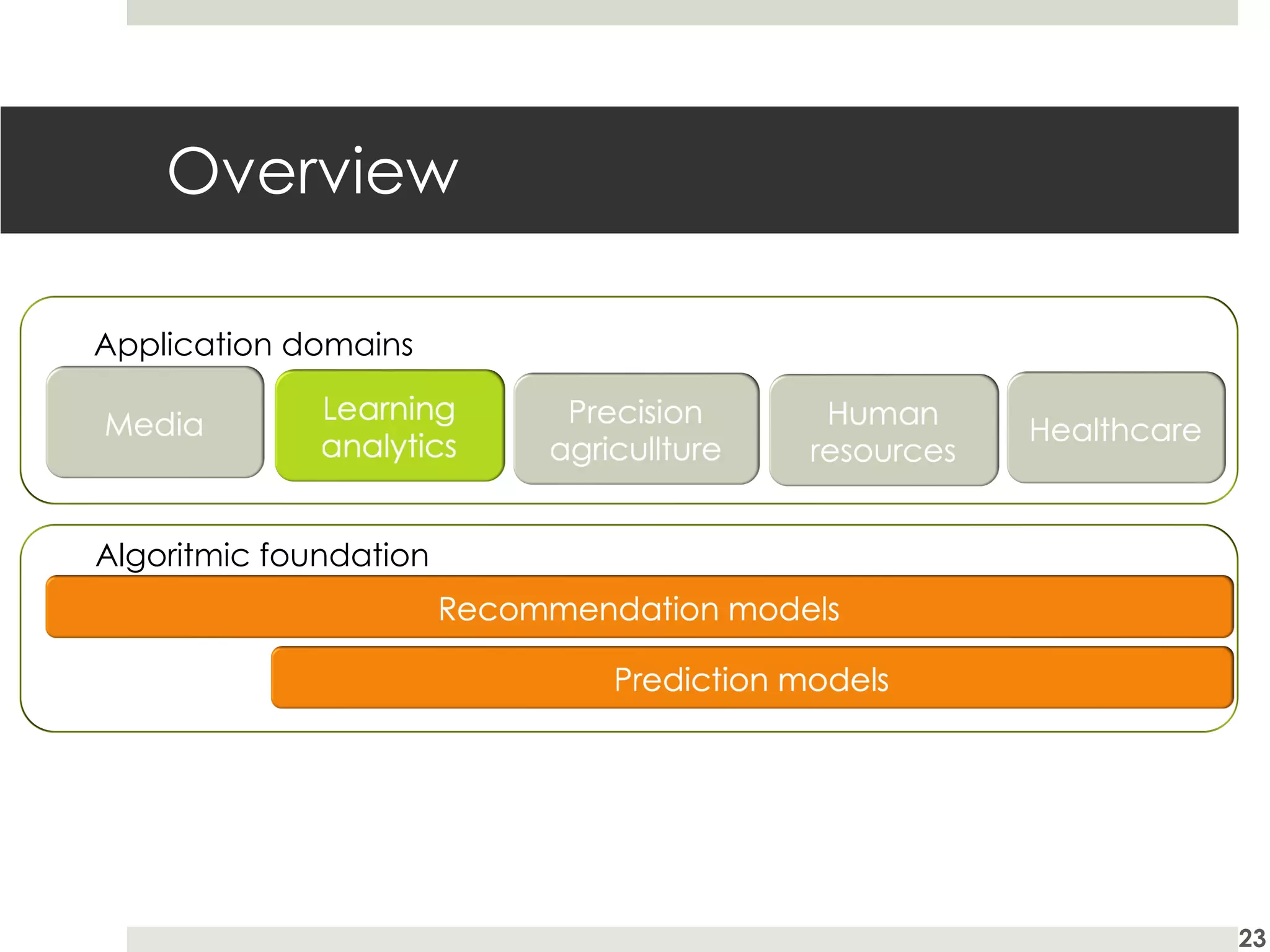
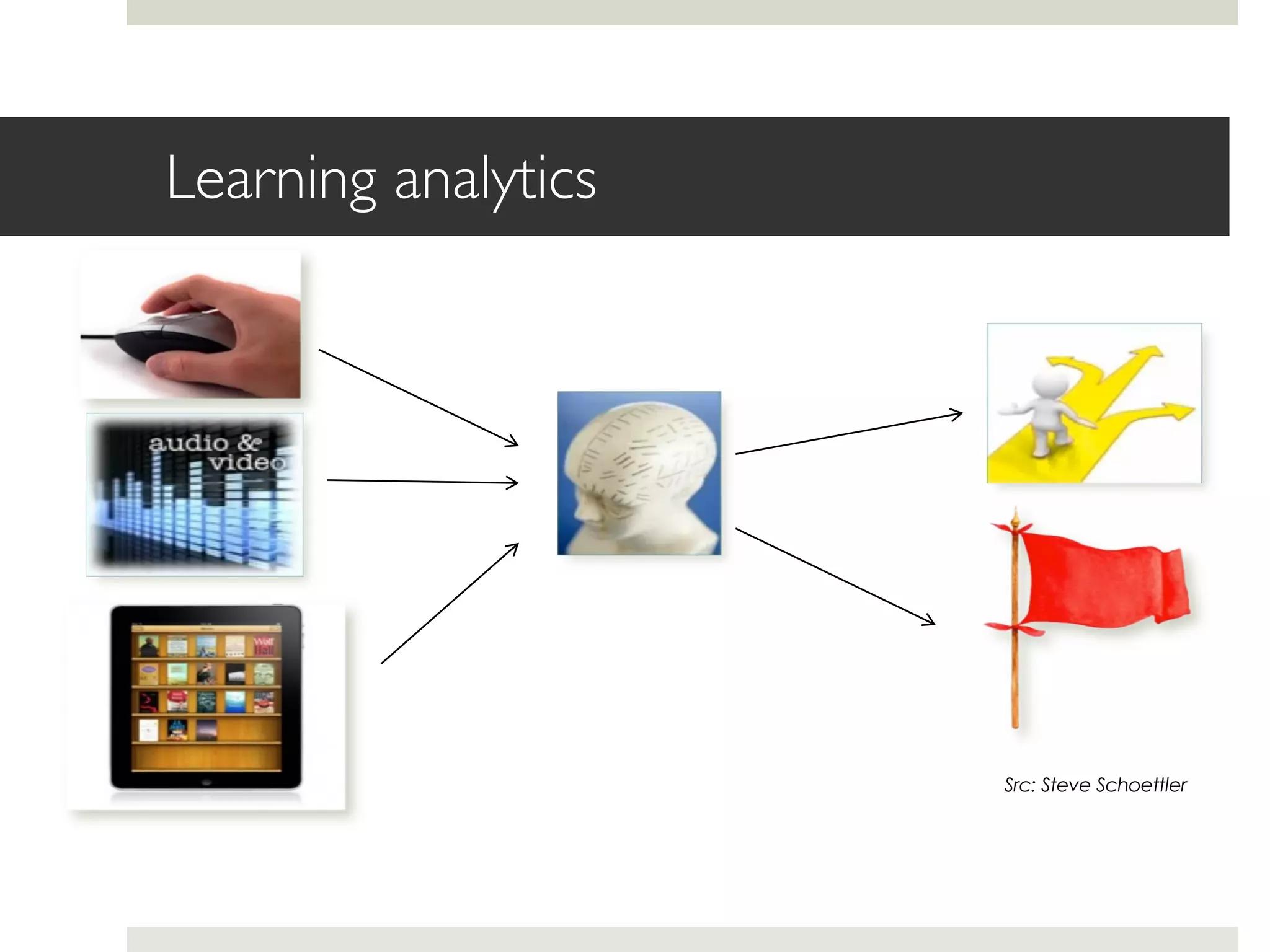


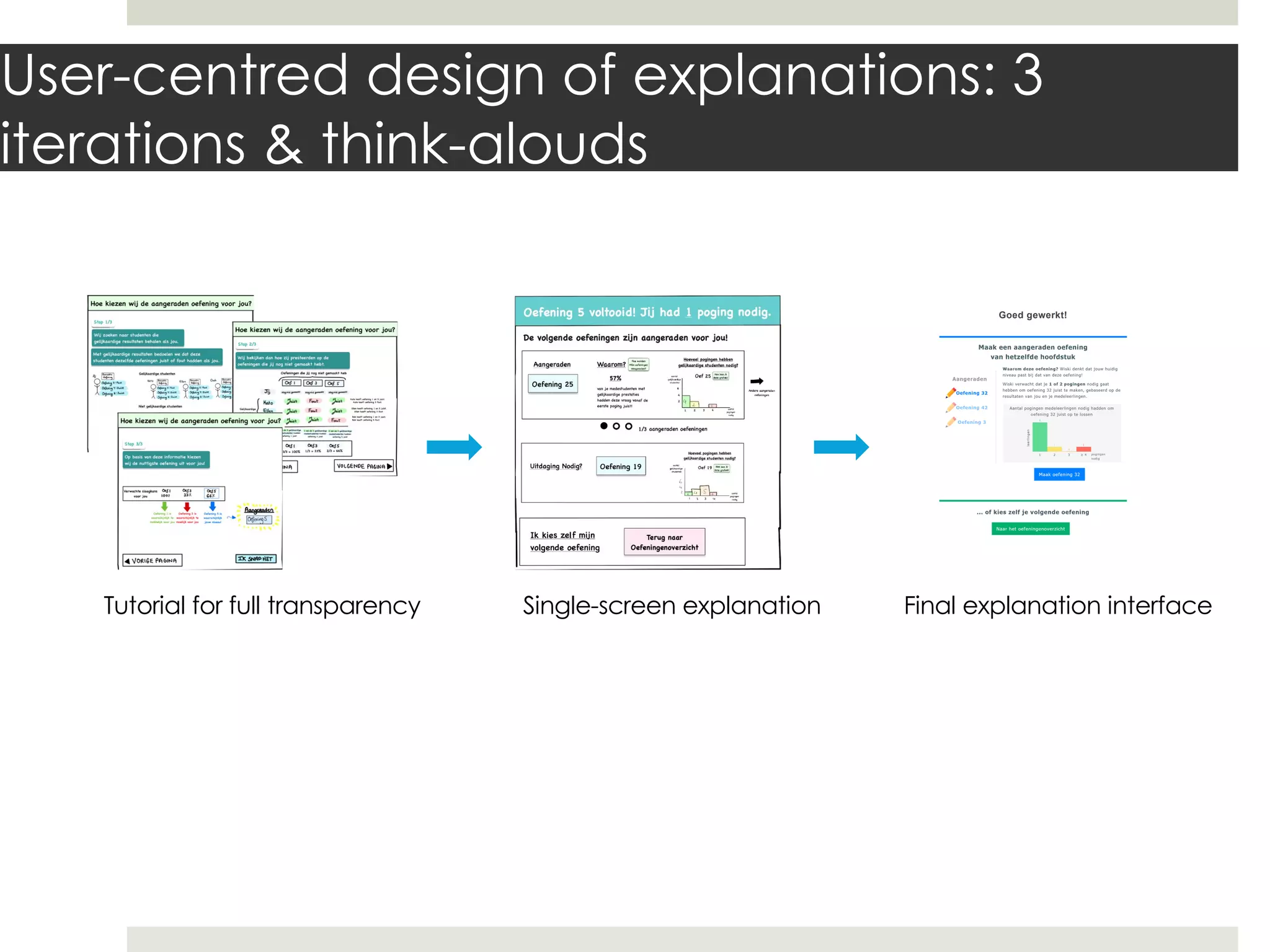
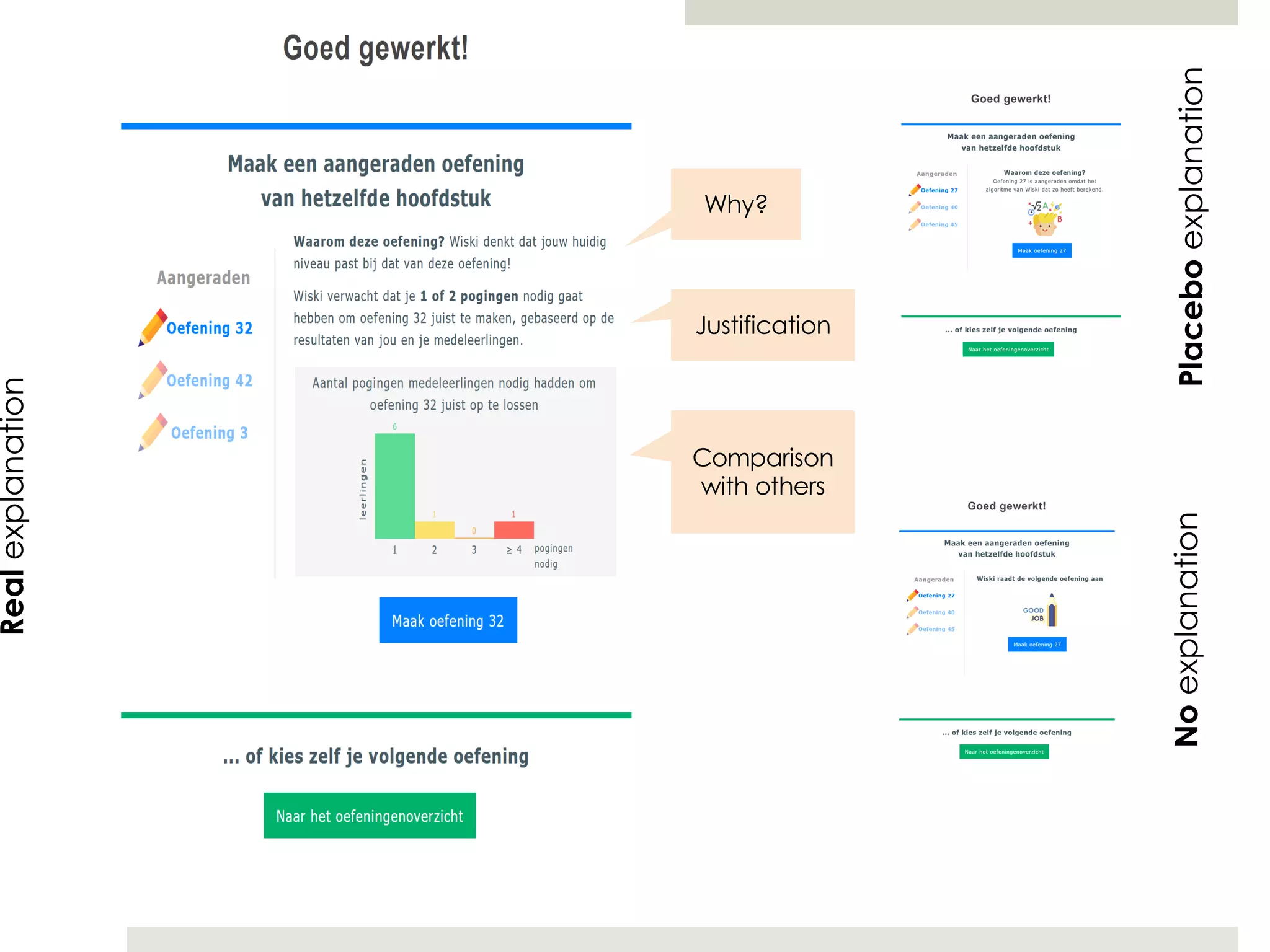
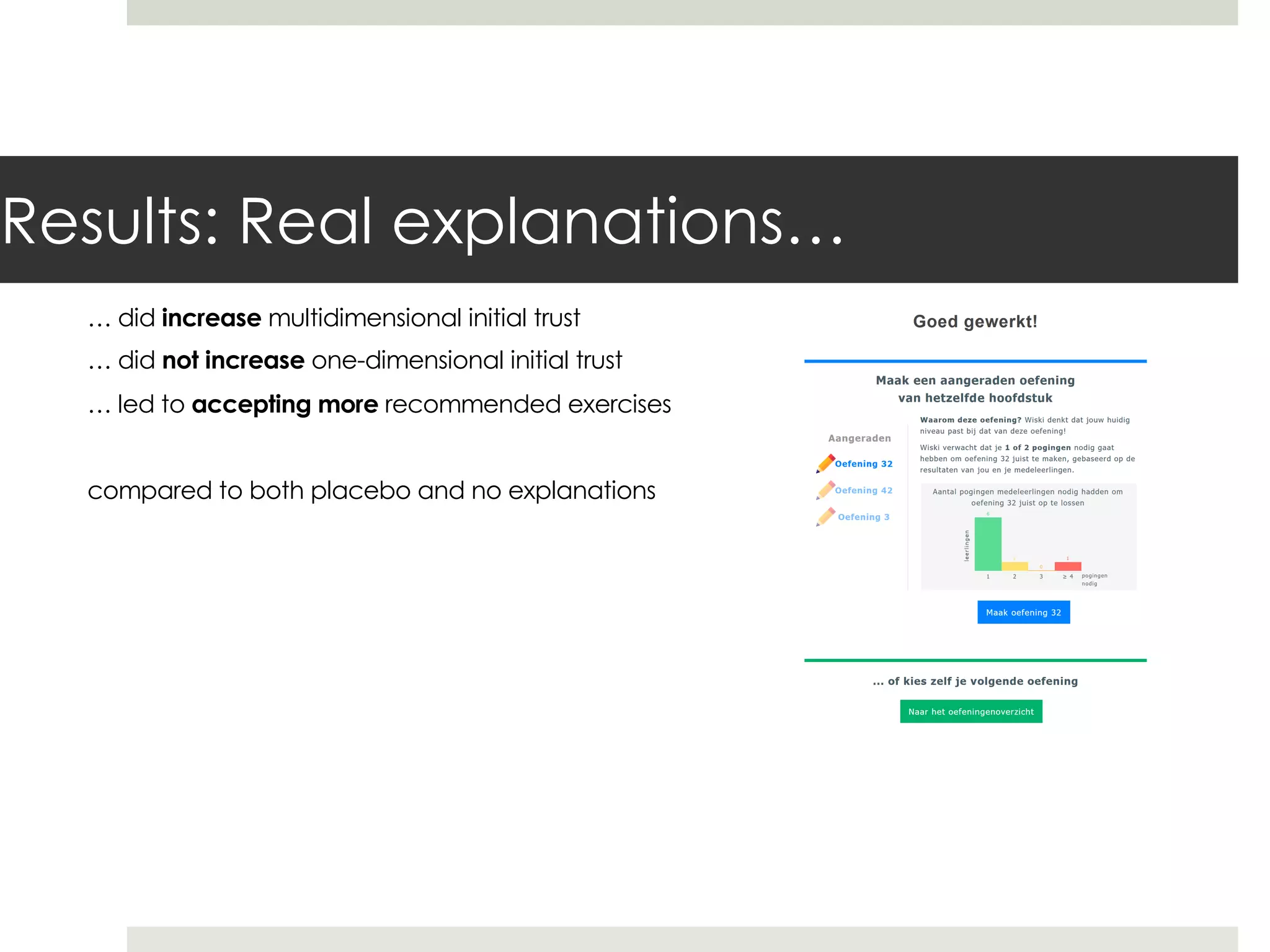

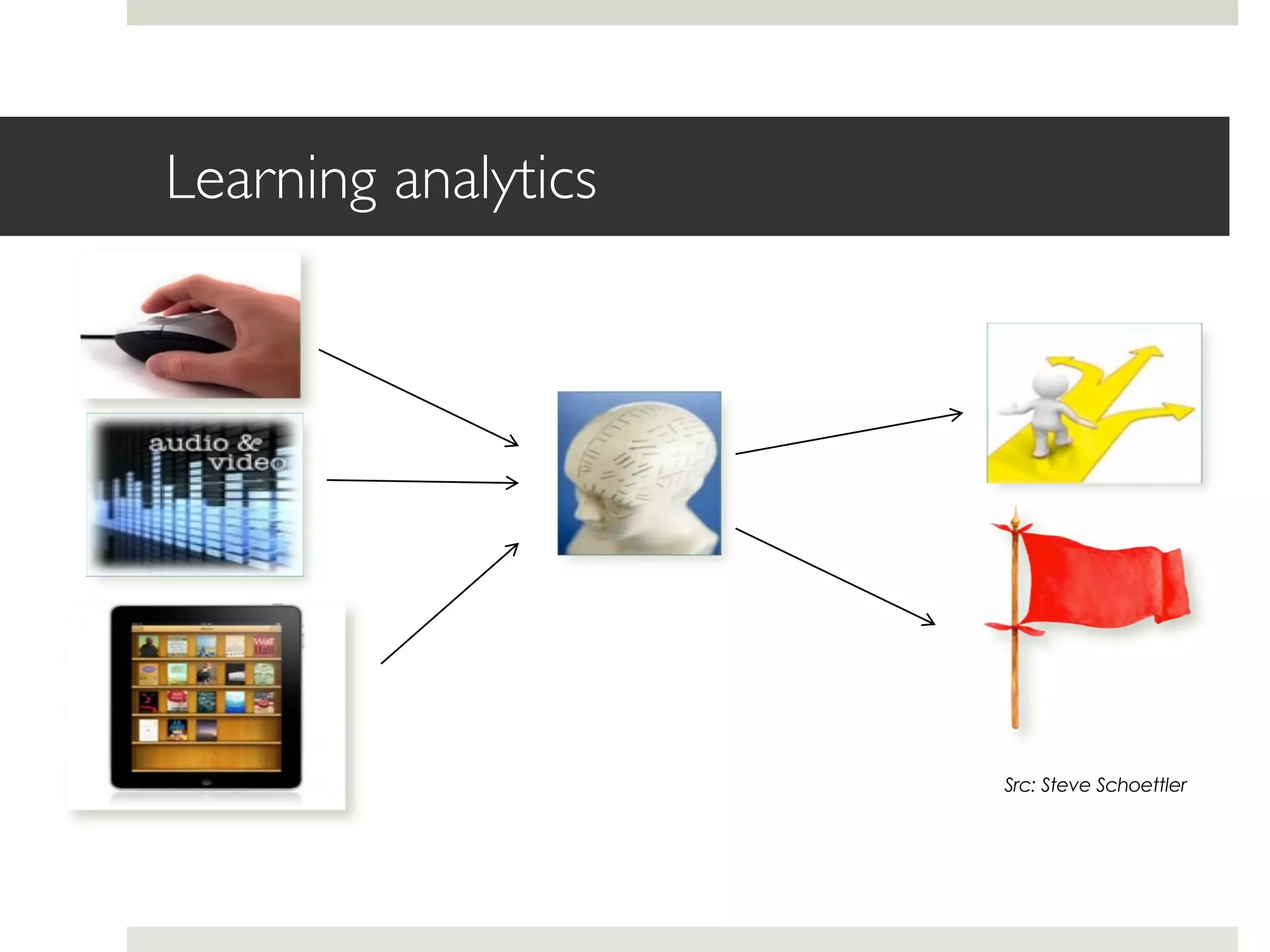

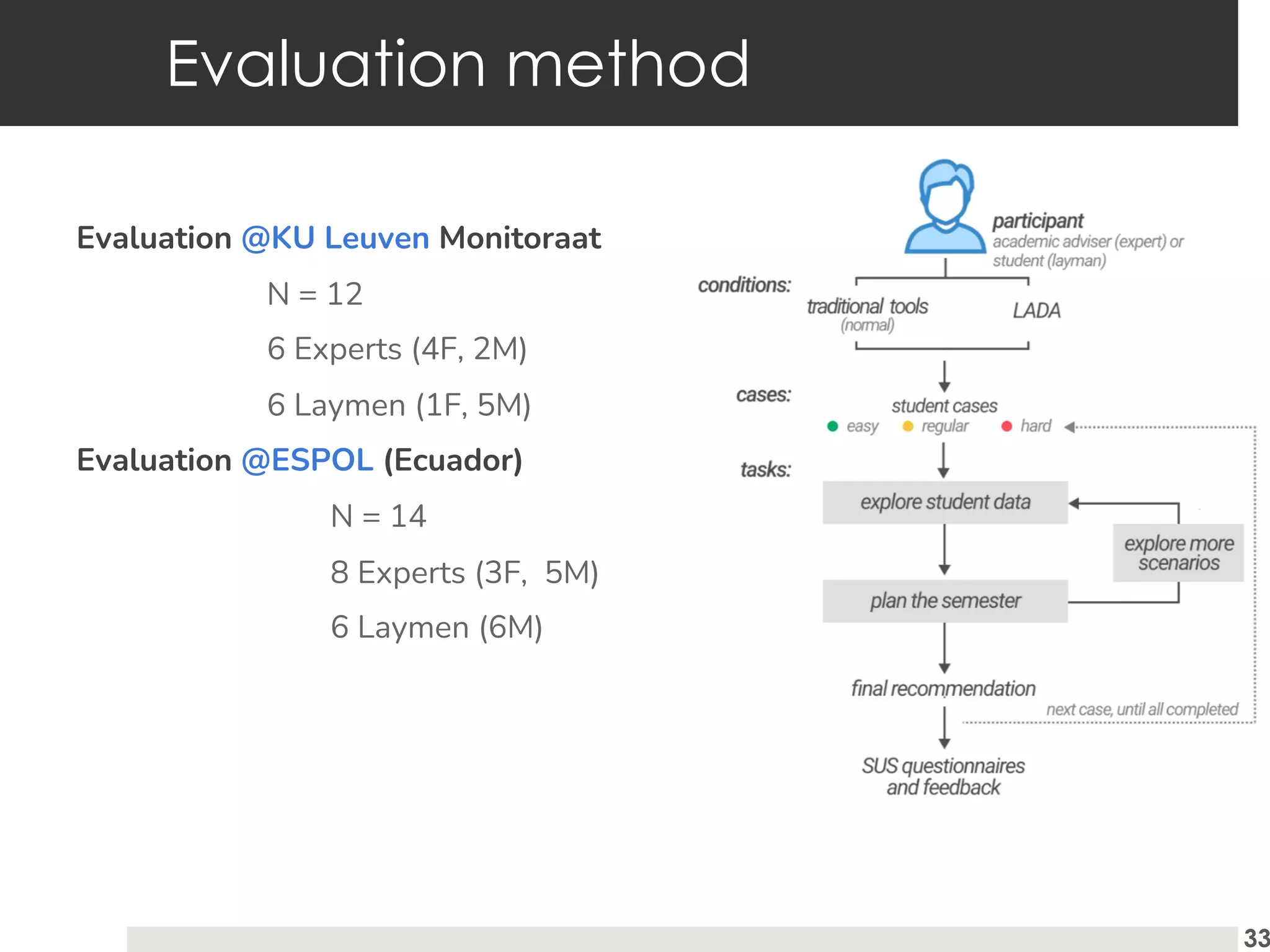
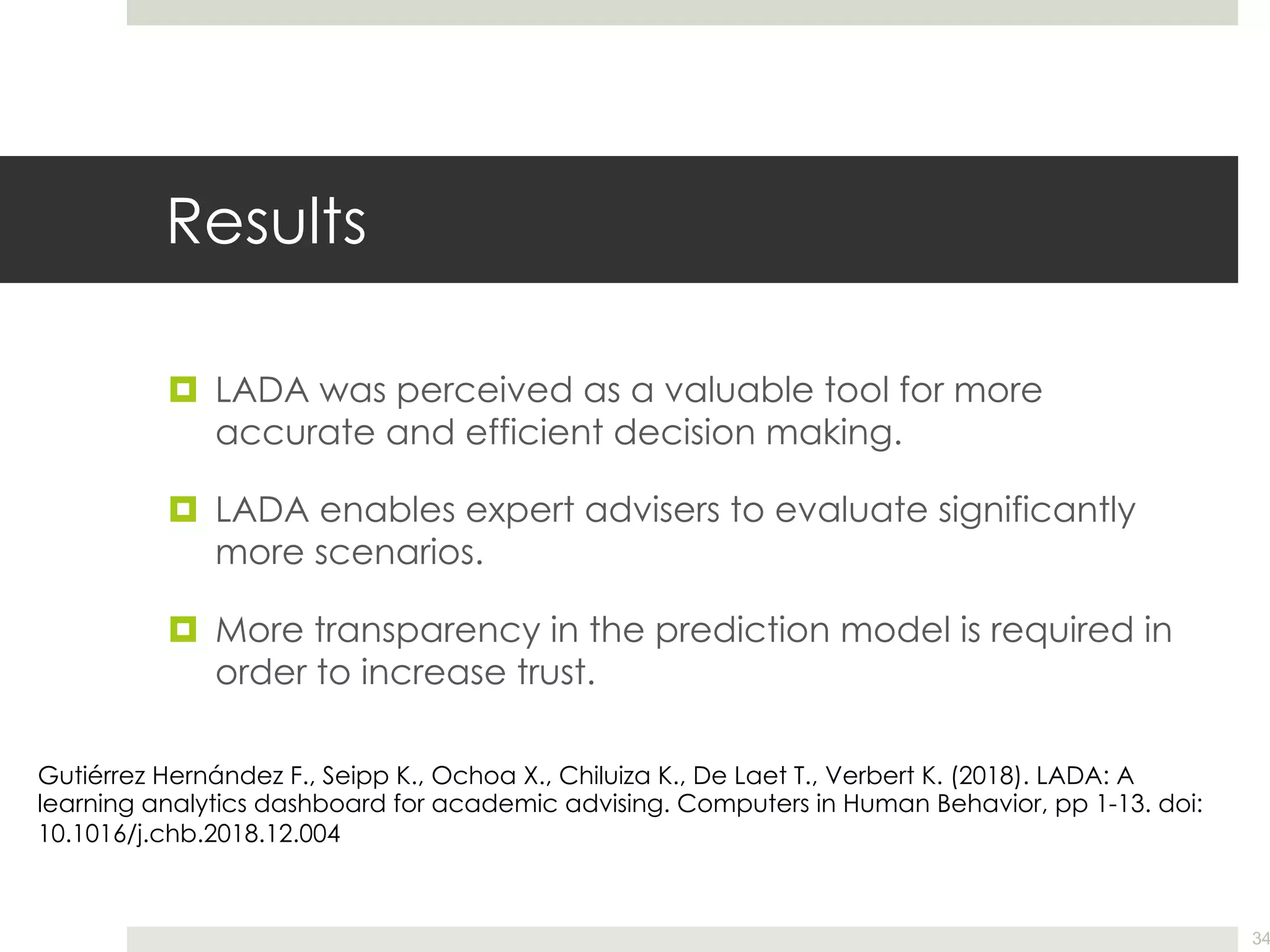

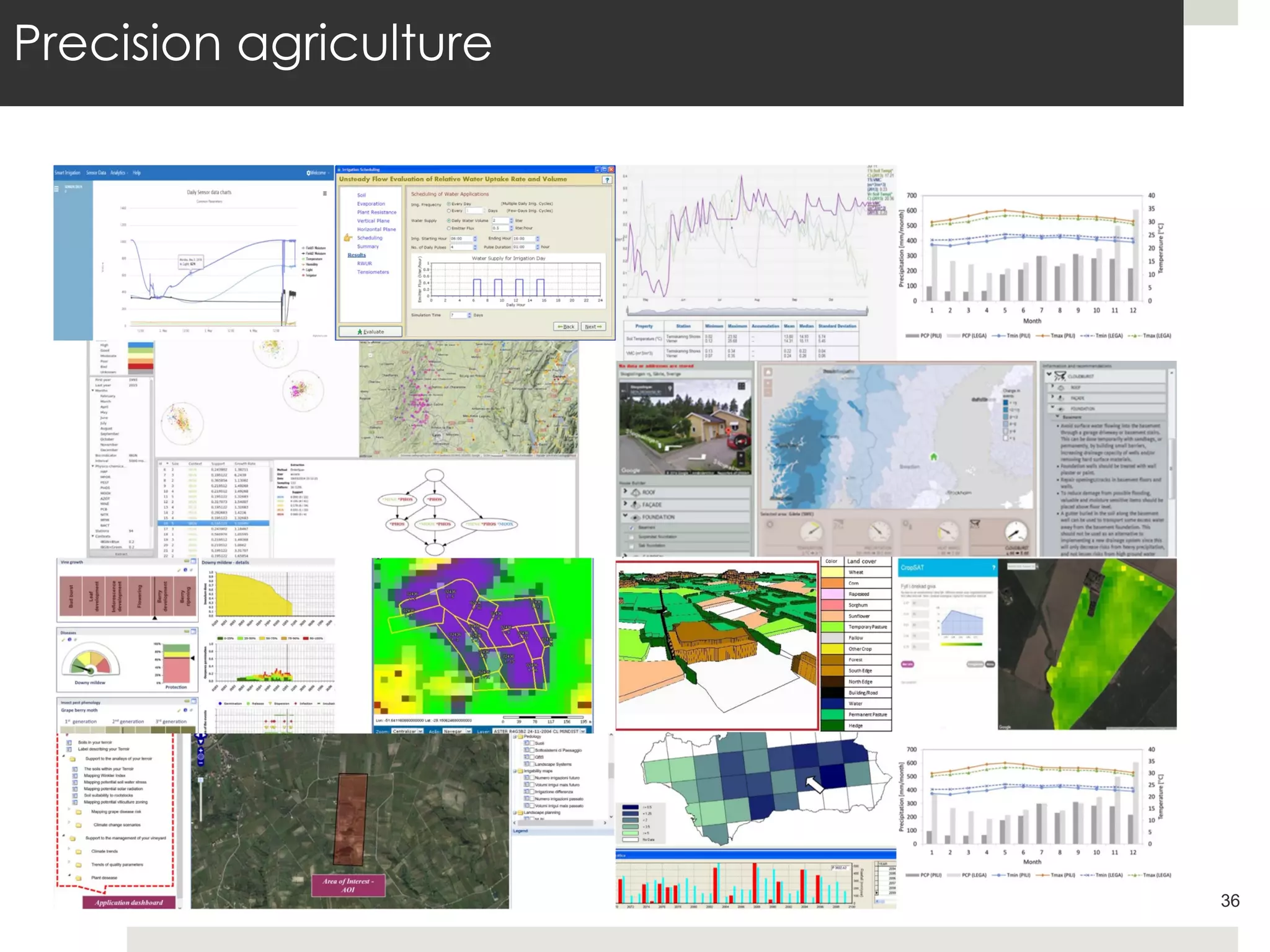
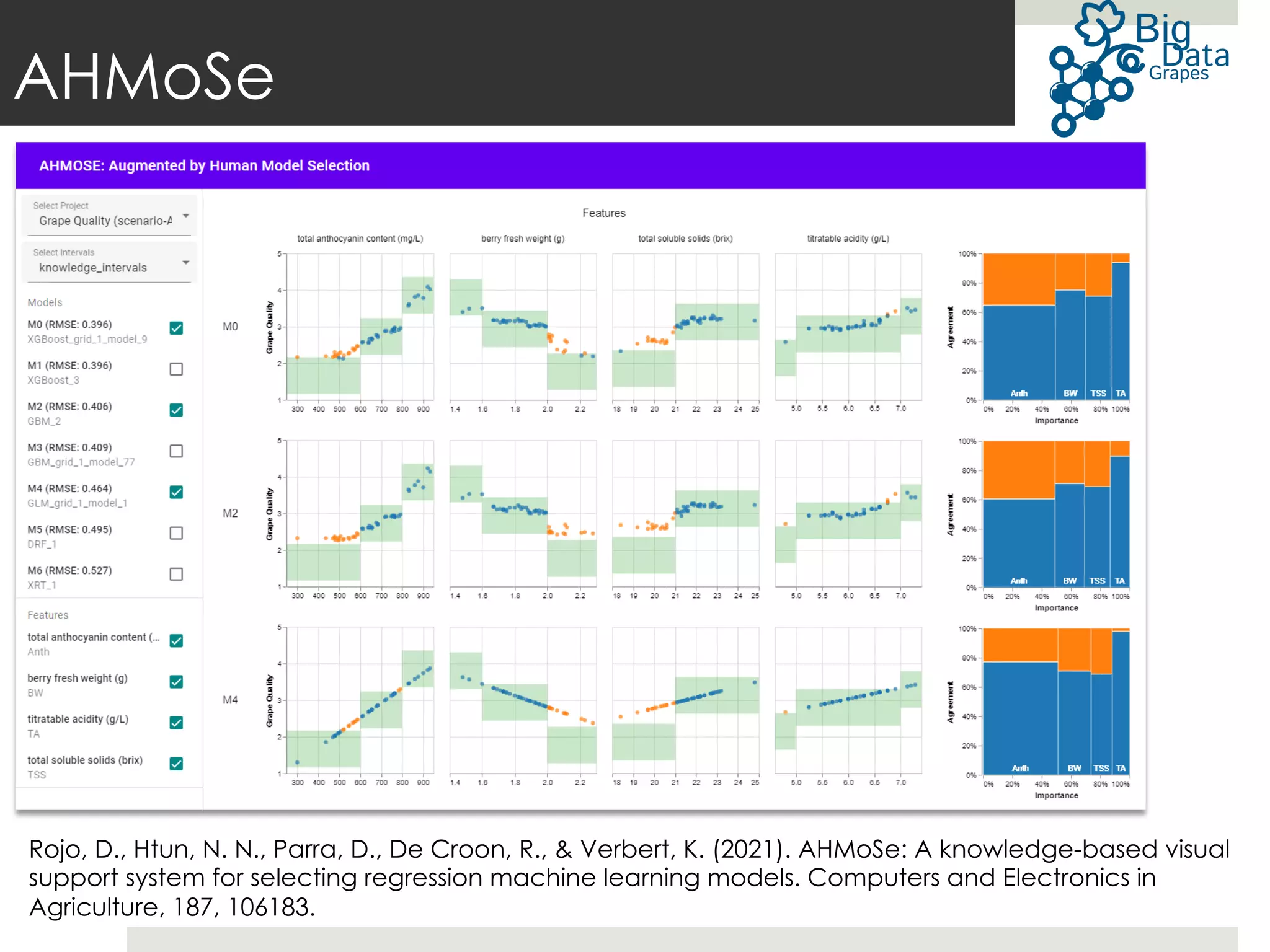
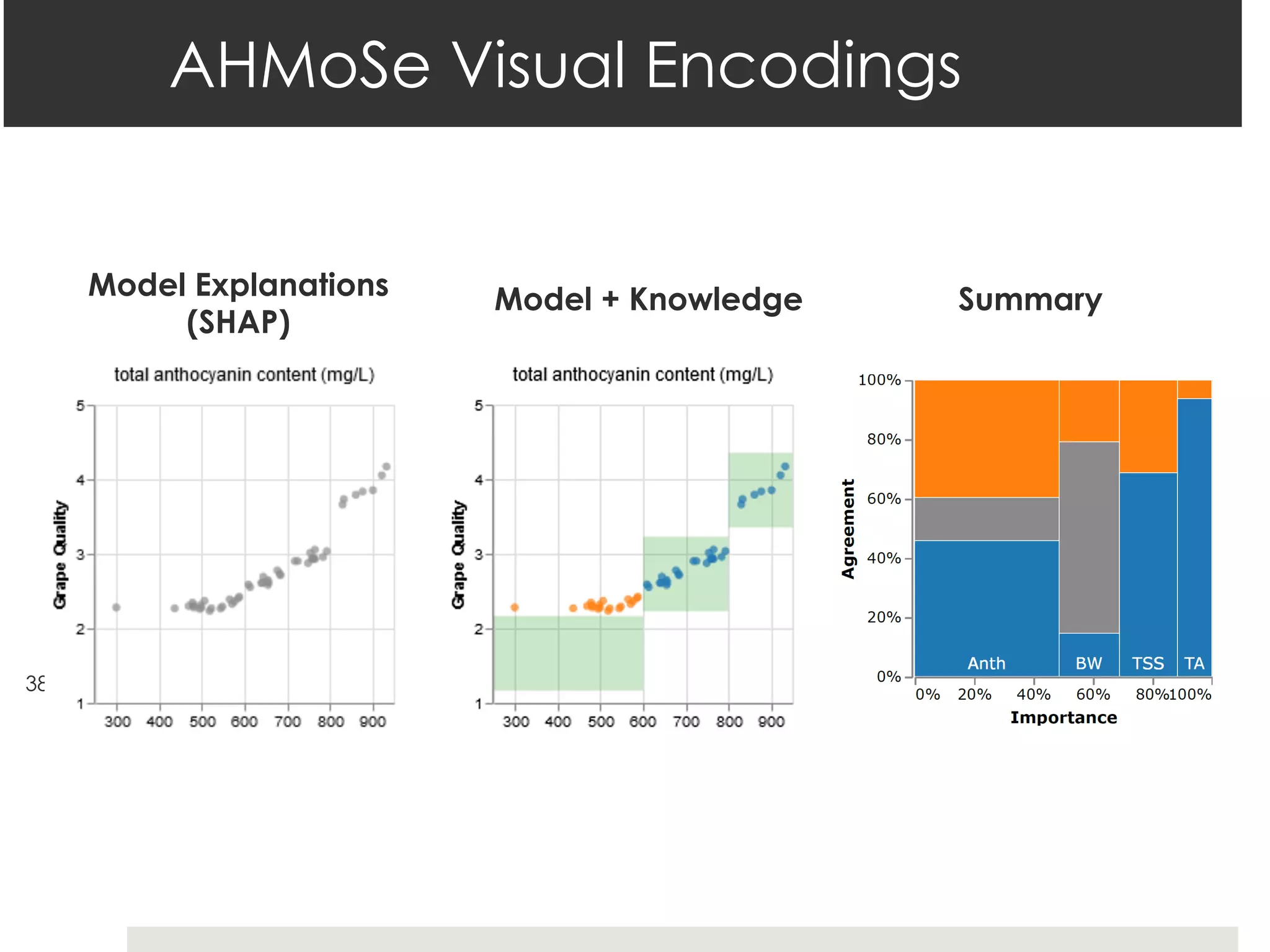
![Case Study – Grape Quality Prediction
39
¤ Grape Quality Prediction Scenario
[Tag14]
¤ Data
¤ Years 2010, 2011 (train) 2012 (test)
¤ 48 cells (Central Greece)
¤ Knowledge-based rules
[Tag14] Tagarakis, A., et al. "A fuzzy inference system to model grape
quality in vineyards." Precision Agriculture 15.5 (2014): 555-578. Source: [Tag14]](https://image.slidesharecdn.com/xai-ihm-220419100430/75/Human-centered-AI-towards-the-next-generation-of-interactive-and-adaptive-explanation-methods-39-2048.jpg)
